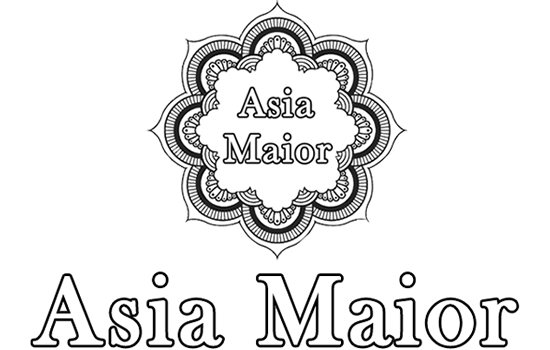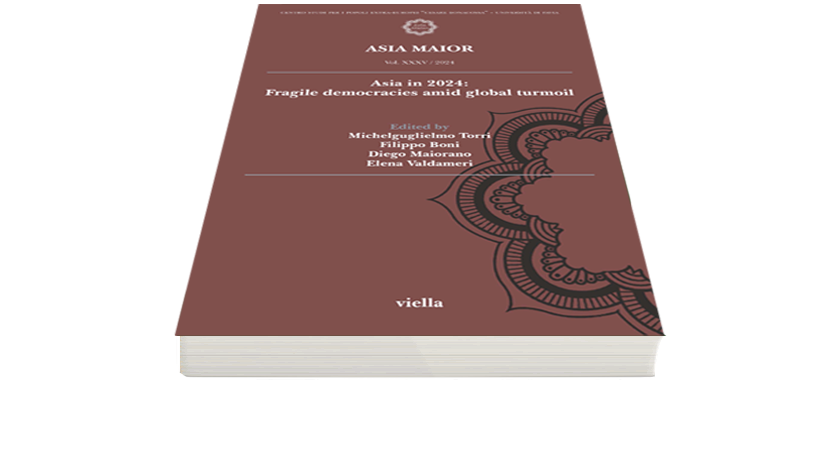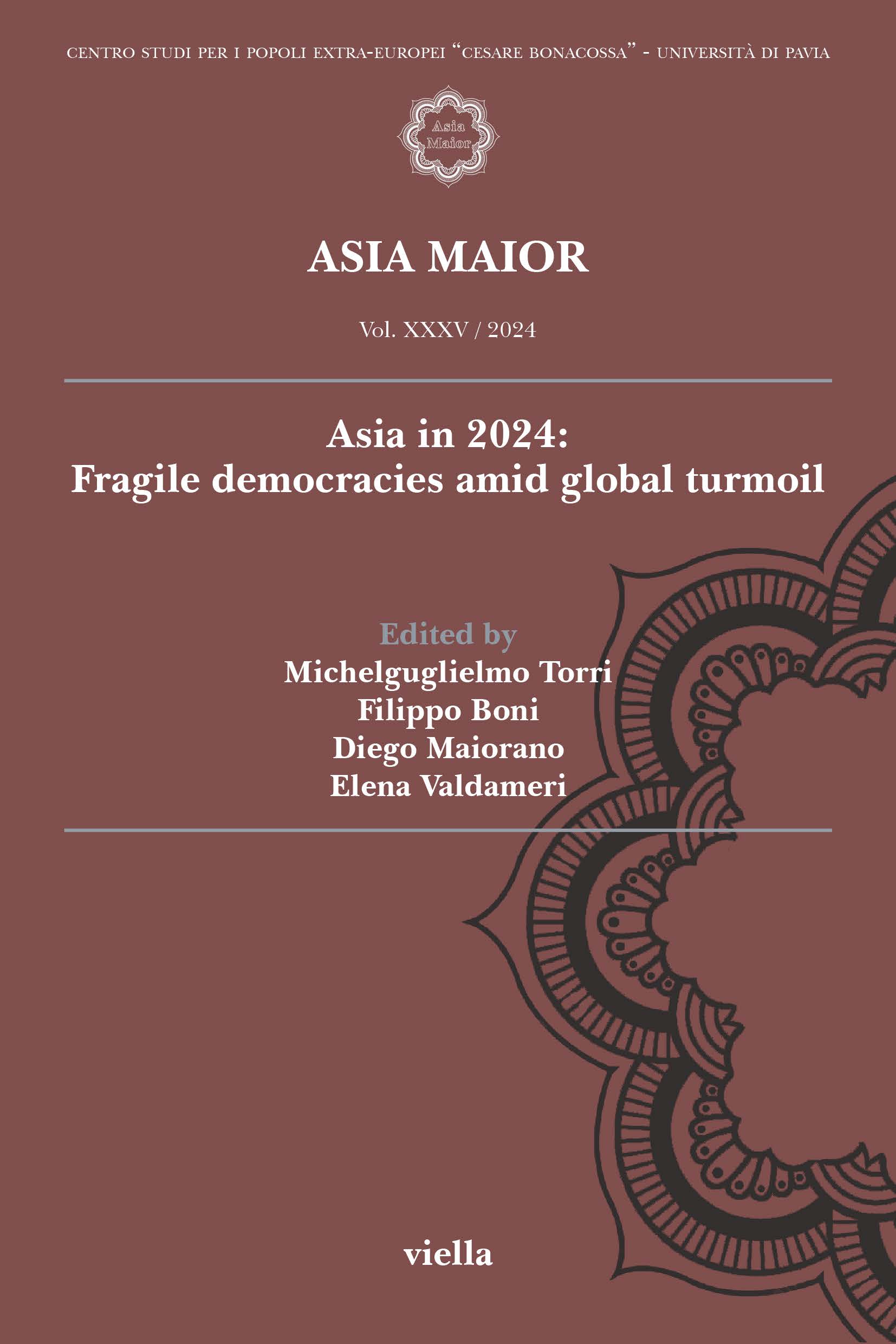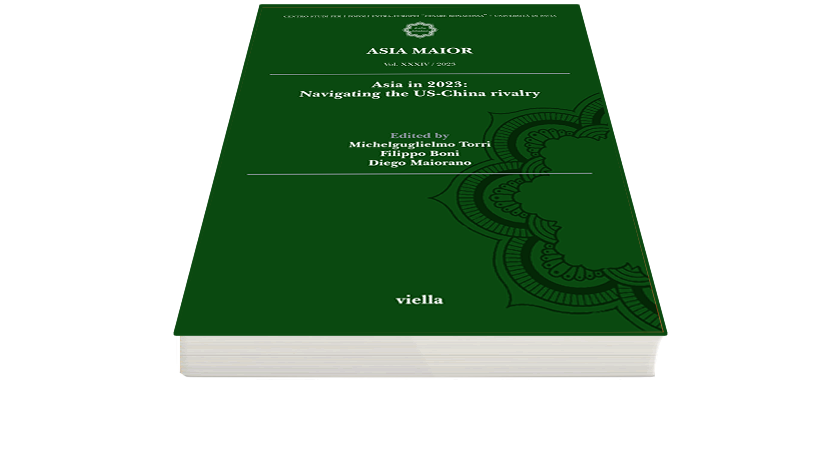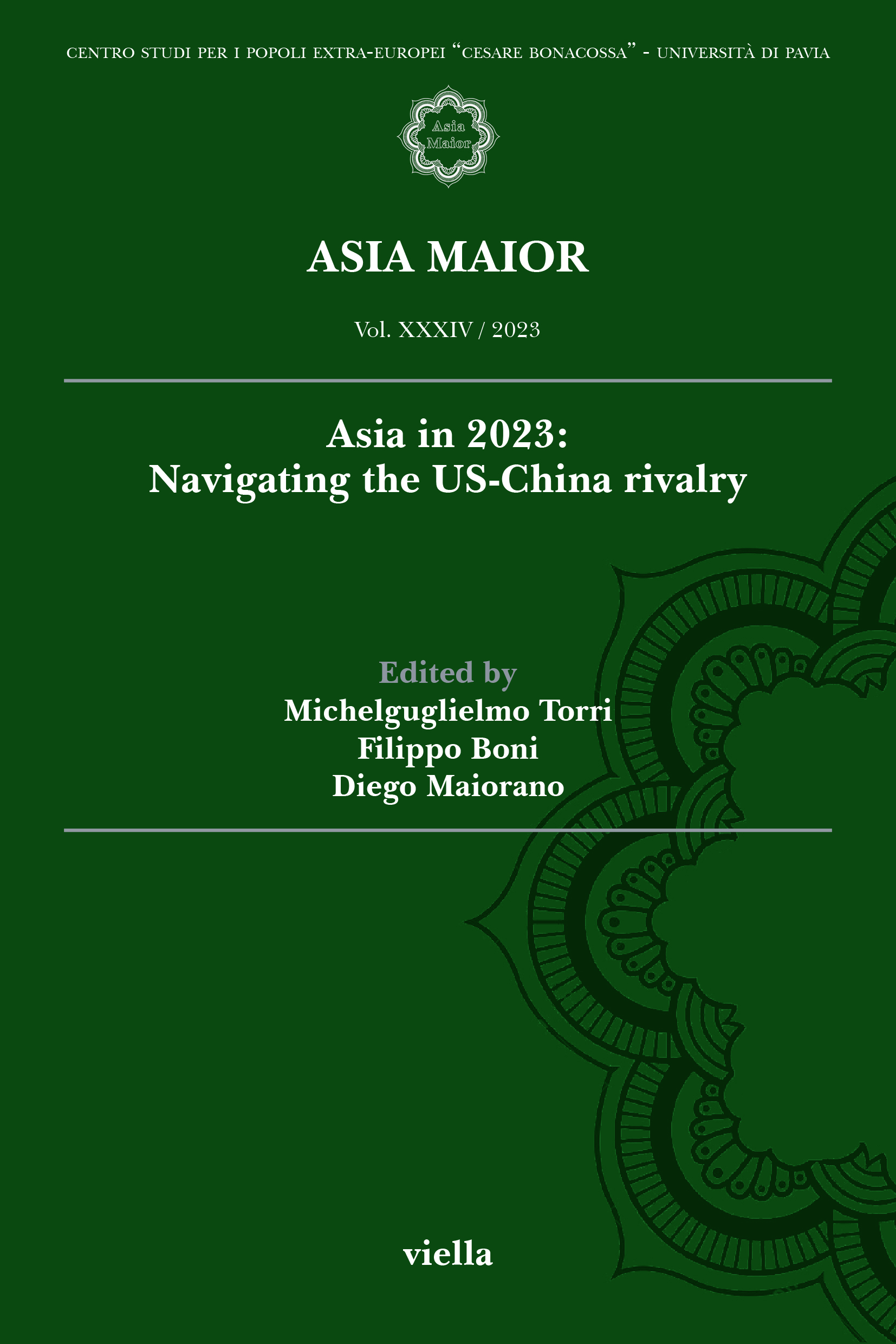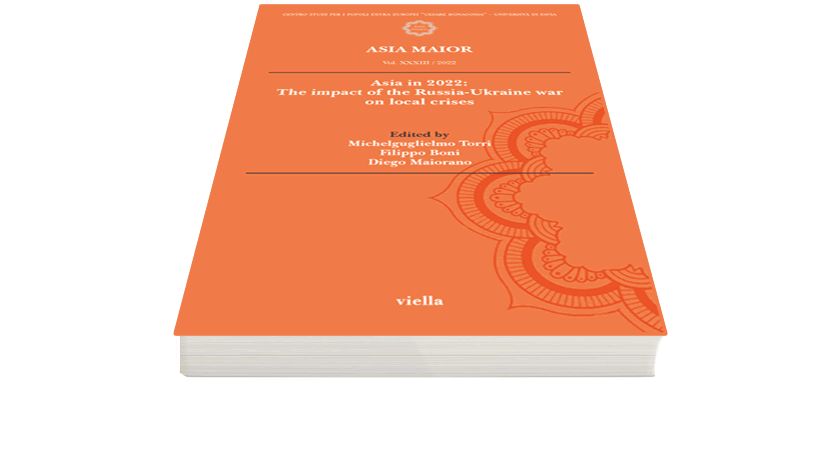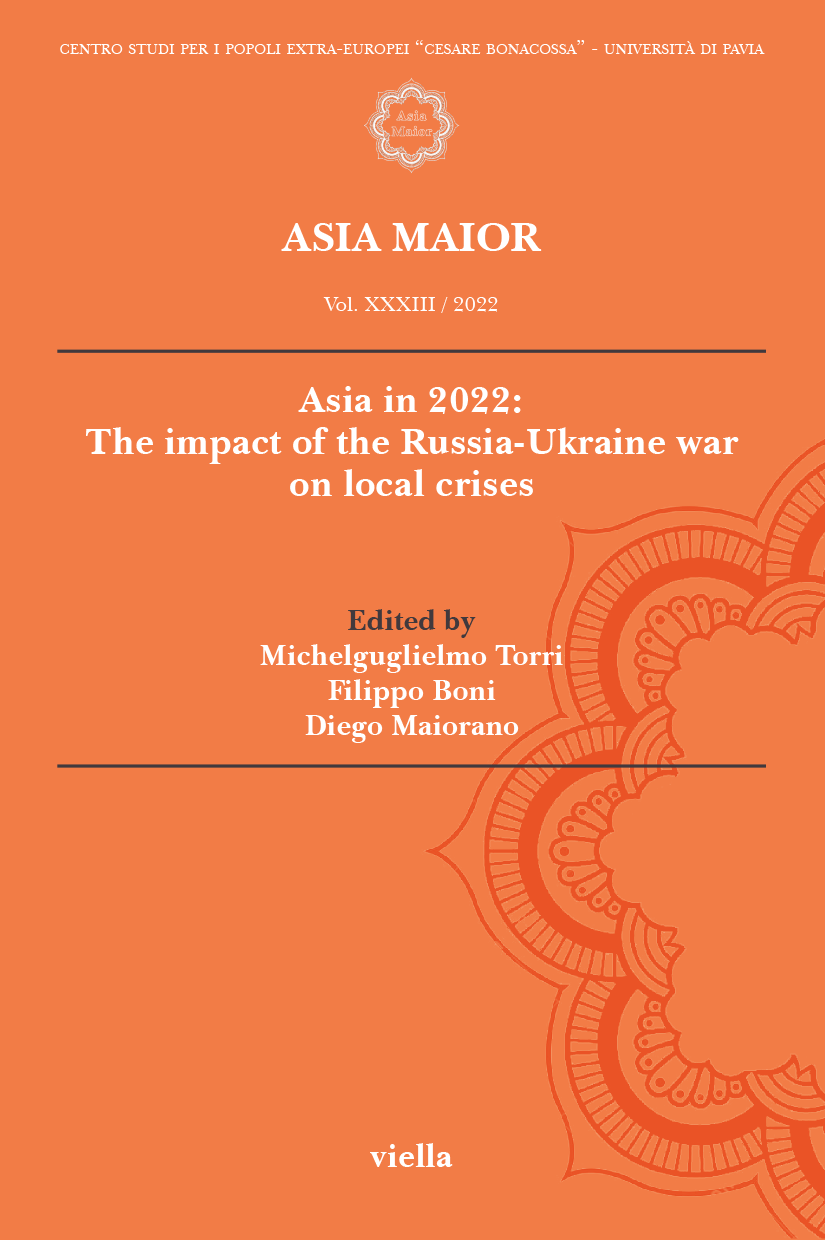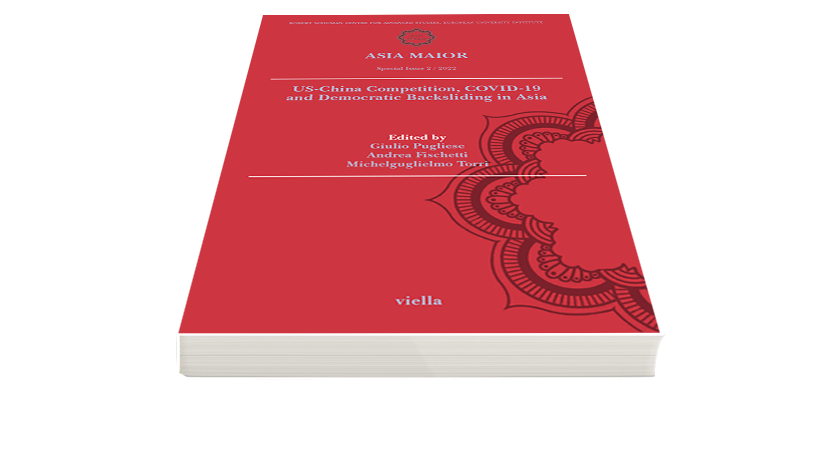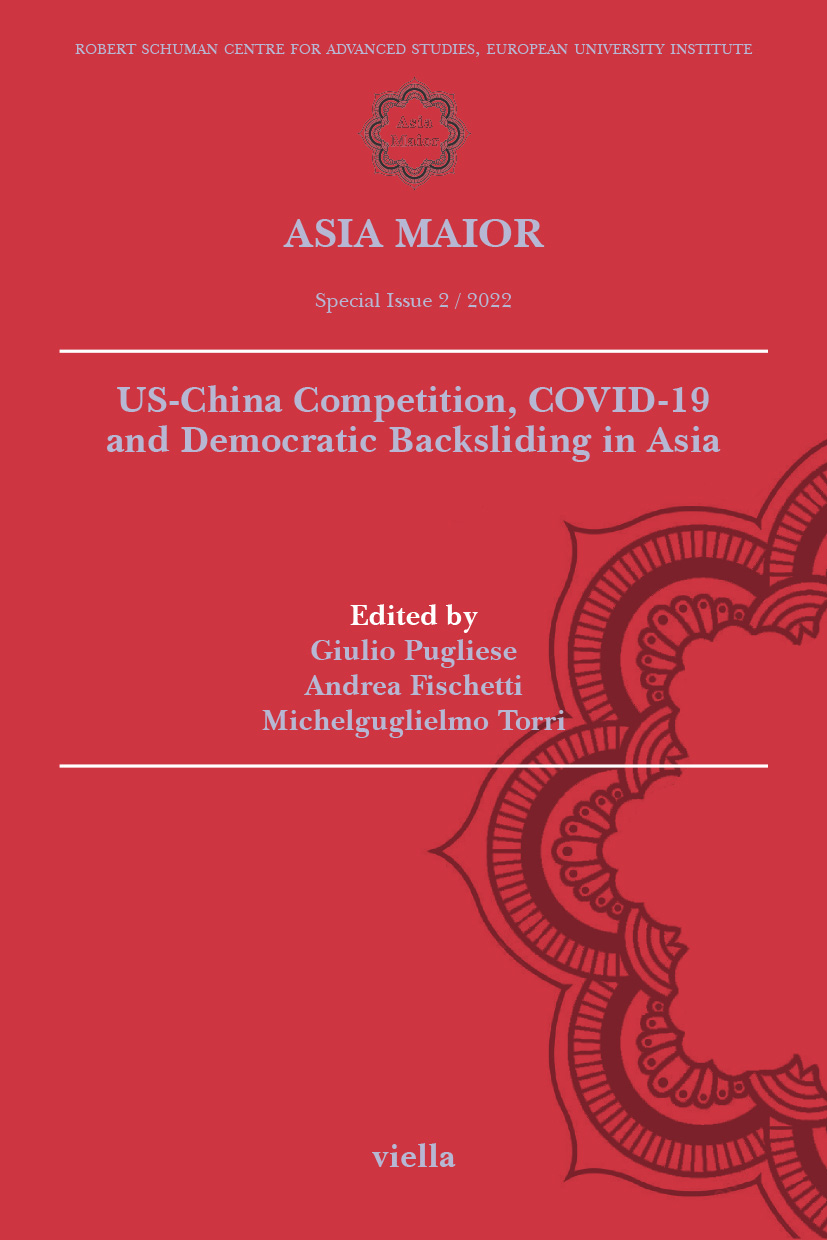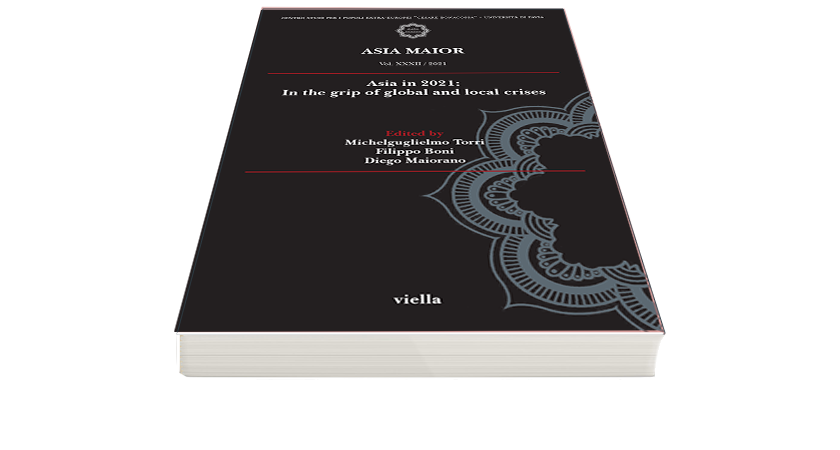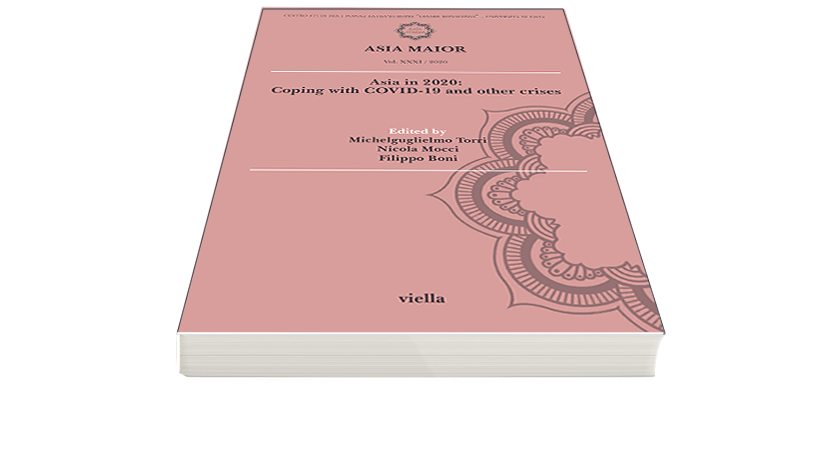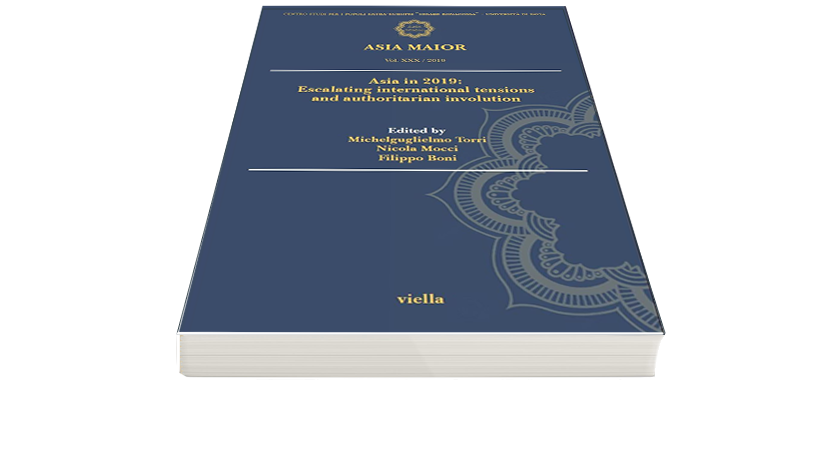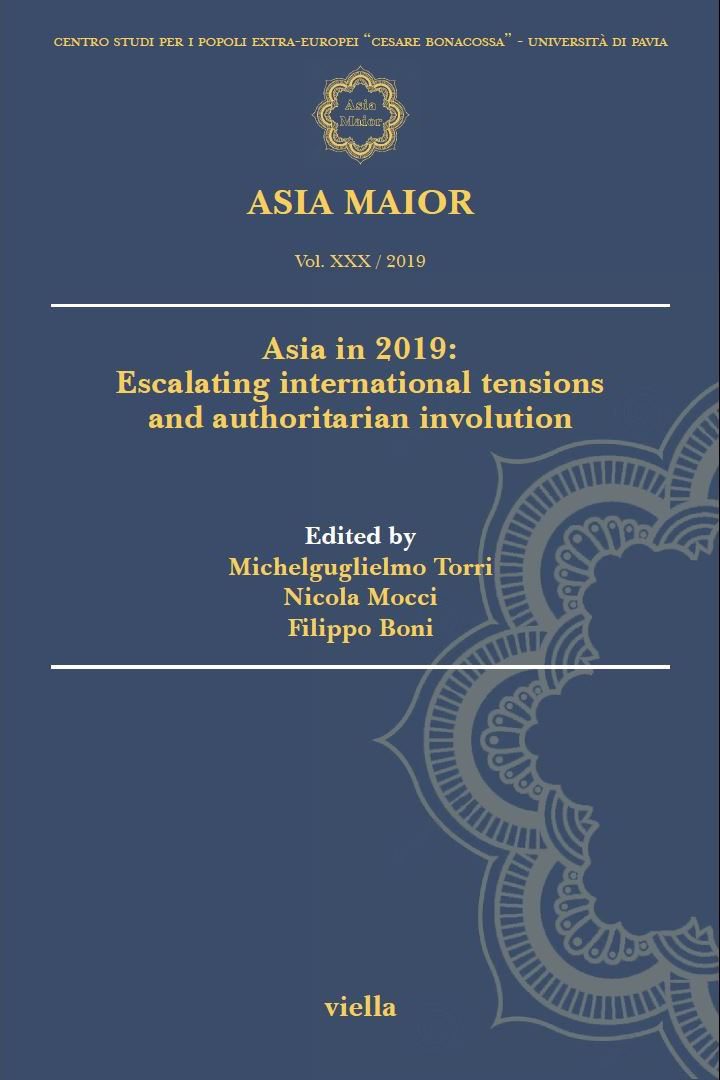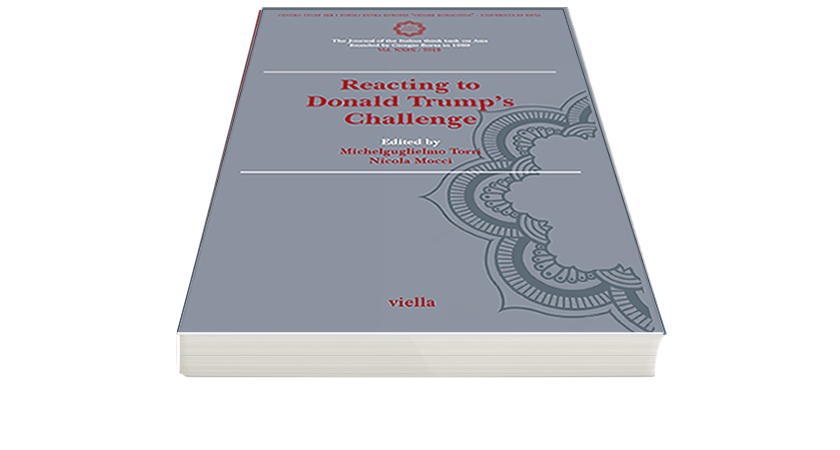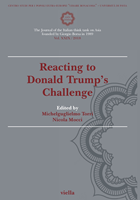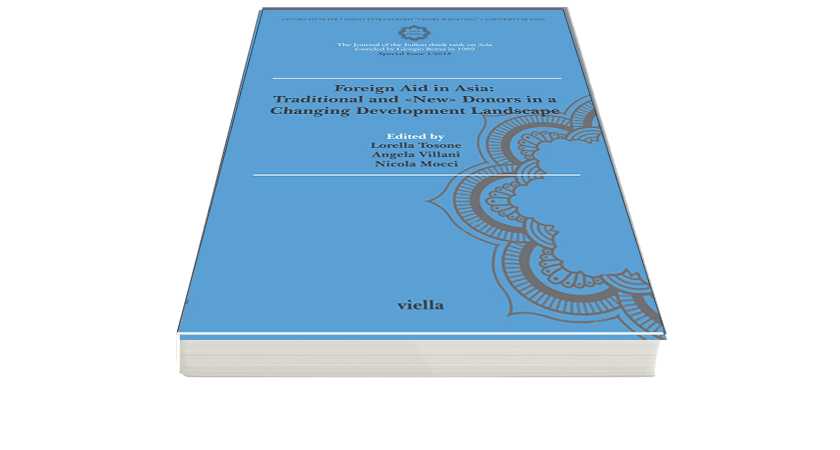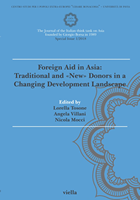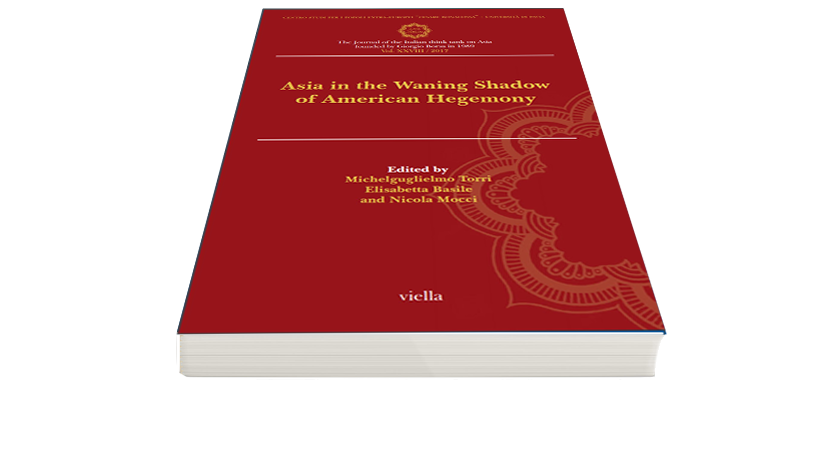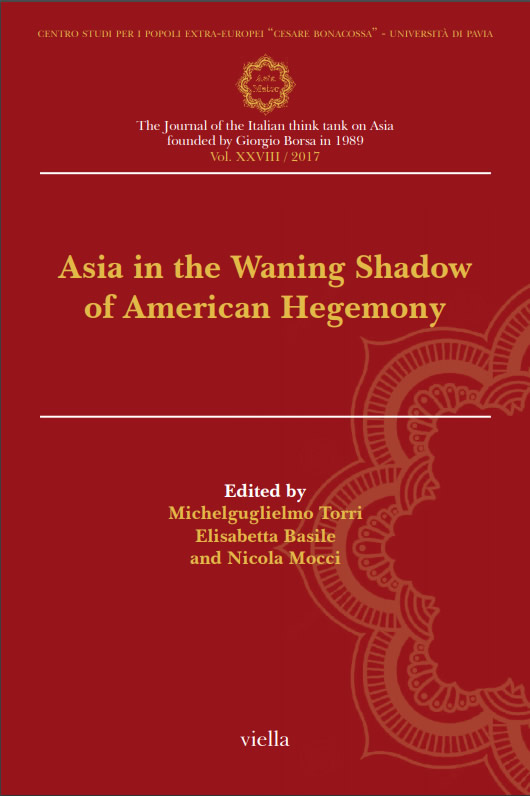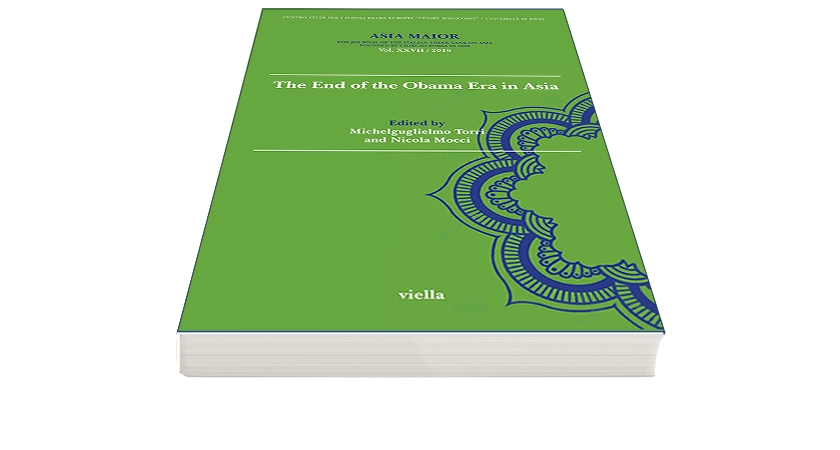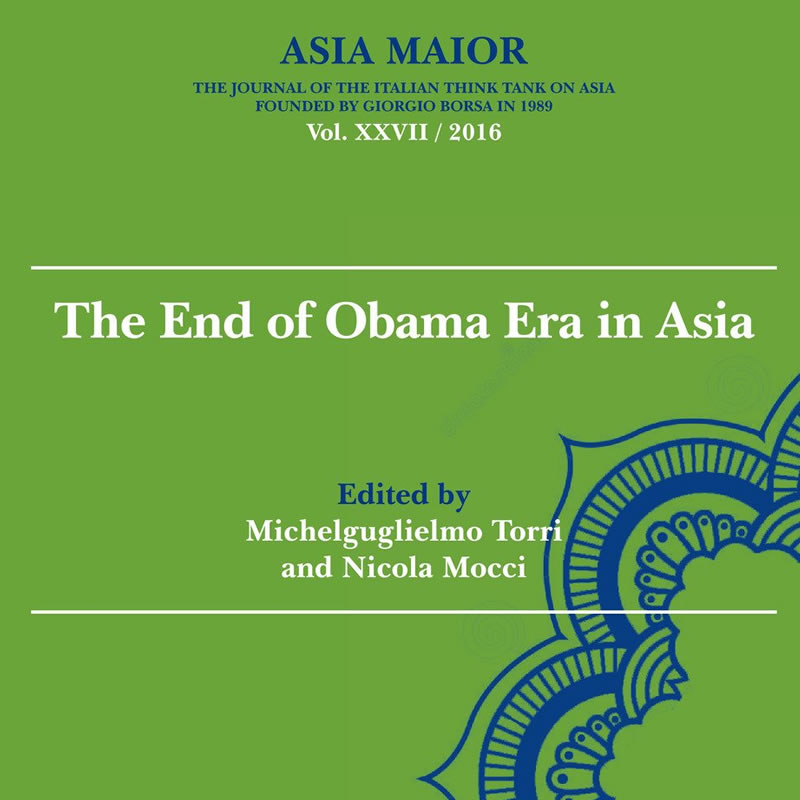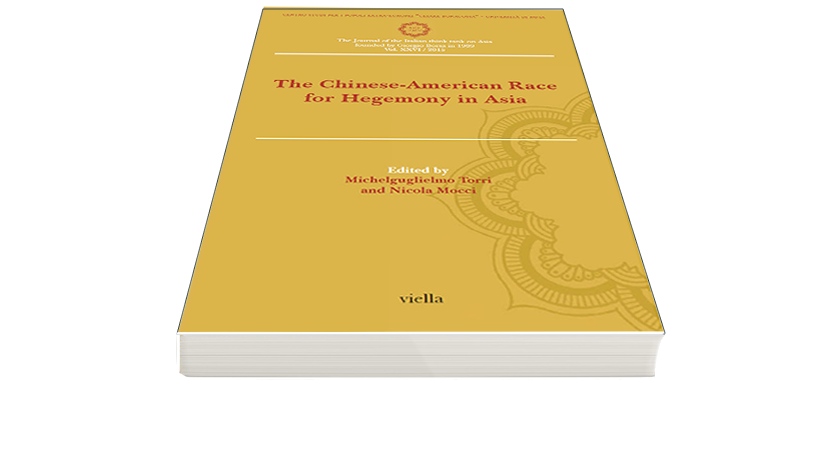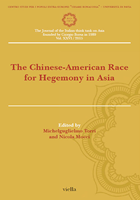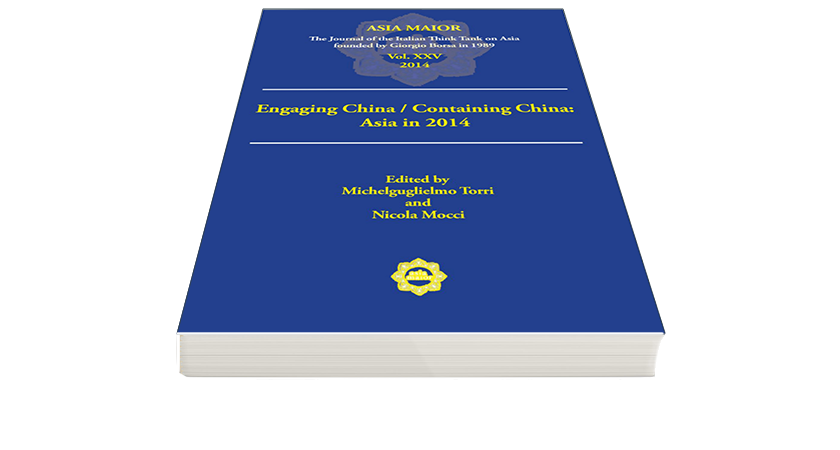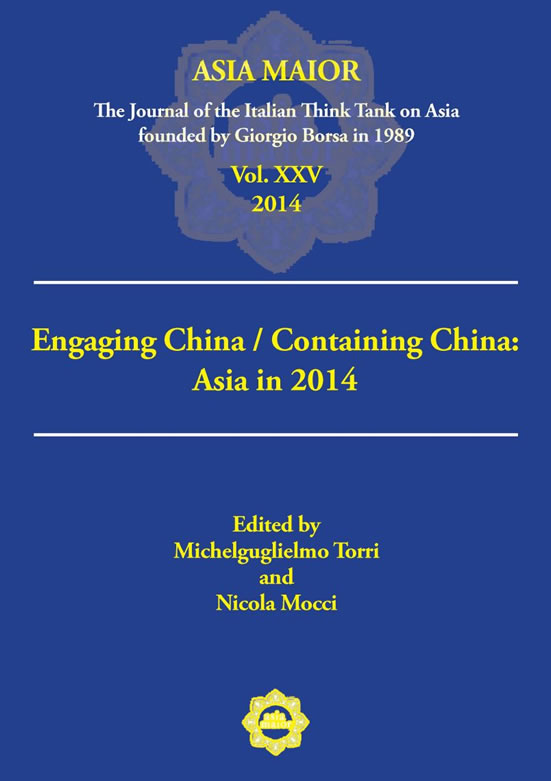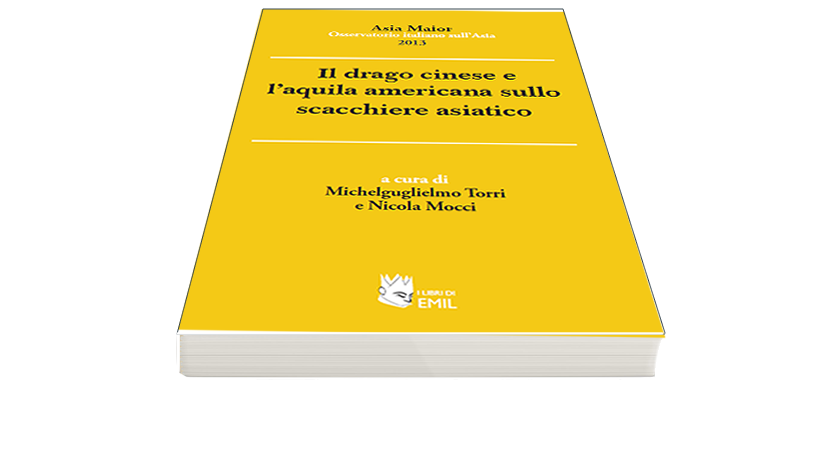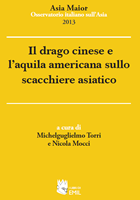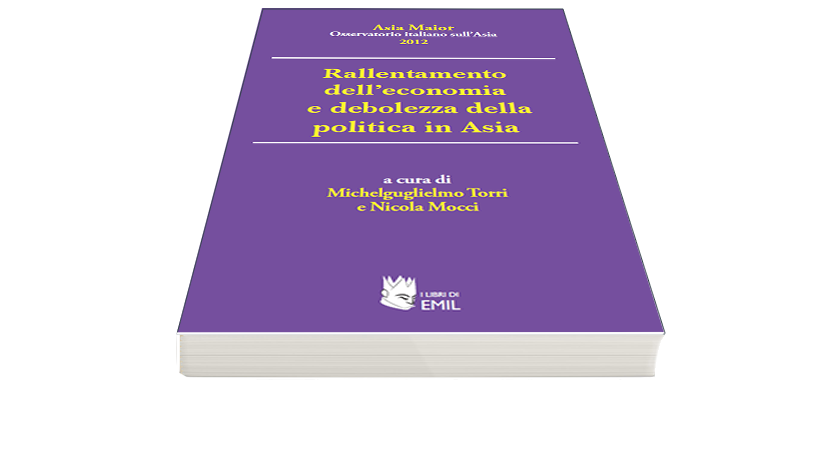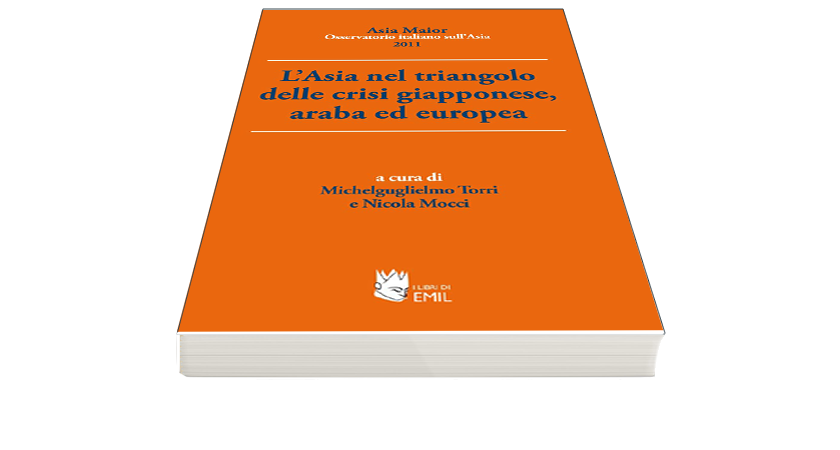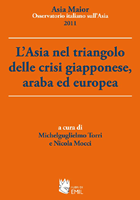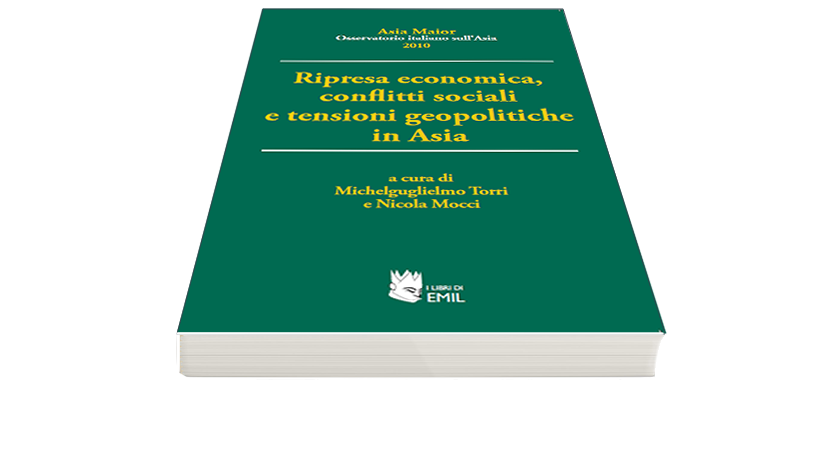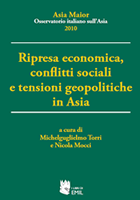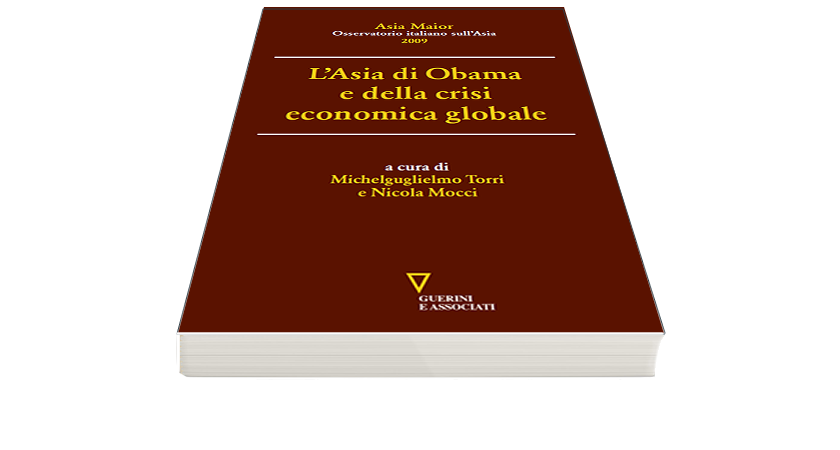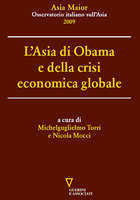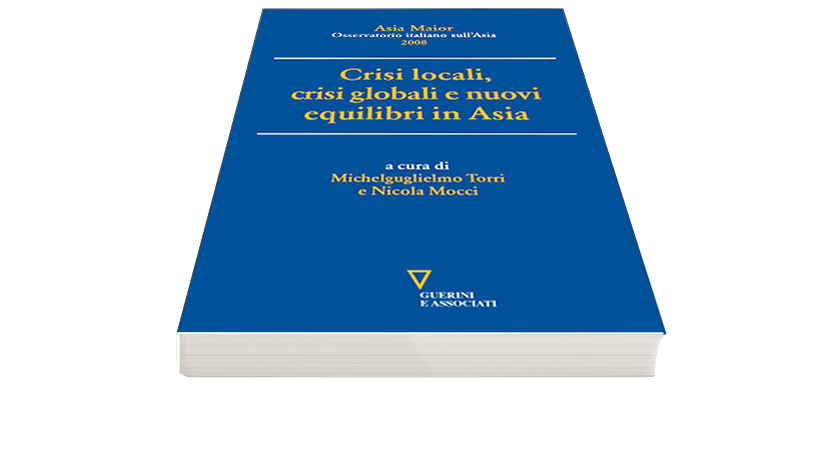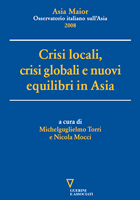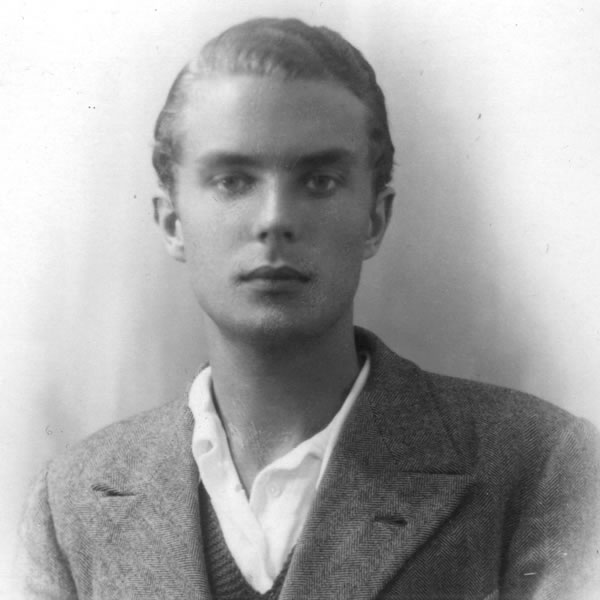Korean peninsula 2024: A year of political and social upheaval*
Available also in pdf – Download Pdf
The year 2024 has been a defining year for the Korean peninsula, characterized by severe political crises, escalating inter-Korean hostilities, and shifting international alignments. In South Korea, the attempted imposition of martial law by President Yoon Suk-yeol and his subsequent impeachment exposed the weaknesses of its institutional system and deepened political polarization, but it also demonstrated the vitality of civil society in swiftly responding to the threat to democracy. Meanwhile, North Korea formally abandoned the idea of reunification, declaring South Korea a «hostile state» while continuing military provocations, including missile tests and non-conventional tactics, such as the launch of trash-filled balloons. Pyongyang’s growing strategic alignment with Russia, highlighted by the Comprehensive Strategic Partnership signed during Vladimir Putin’s visit to North Korea, raised concerns about regional security and arms proliferation. Amid these developments, South Korea sought to reinforce its trilateral alliance with the United States and Japan while navigating complex diplomatic relations with China and Southeast Asia. As political uncertainty persists in Seoul and inter-Korean tensions reach new heights, the trajectory of the Korean peninsula remains uncertain. The coming months will be critical in determining whether stability can be restored or whether the Korean peninsula will continue on its trajectory of deepening division and conflict.
Keywords – South Korea; North Korea; Yoon Suk-yeol; Lee Jae-myung; martial law; Kim Jong Un; Russia-North Korea relations; North Korea missile tests; inter-Korean relations; Japan-South Korea relations; US-Japan-South Korea.
1. Introduction
The events that took place on the Korean peninsula in 2024, characterized by profound political crises, escalating inter-Korean hostilities, and significant shifts in regional and global alliances, marked an important turning point in the political and social development of the two Koreas and represented the completion of processes that had been in the making for several years.
South Korea faced an unprecedented constitutional crisis that tested the resilience of its political system. Strong political polarization has been a key feature of the domestic political development since the democratic transition in 1987, due mainly to the legacy of four decades of authoritarian rule and of continuous struggle by the political and social opposition. This polarization reached extremely high level after the 2022 presidential elections, in which Yoon Suk-yeol won with the slightest margin in the country’s history, and in the following years characterized by tension and confrontation between the two main parties, that was reflected in the recurring conflicts between the two main political institutions – the presidency and the National Assembly – controlled by the opposing parties. This tension reached its peak with the imposition of a 6-hour martial law by President Yoon Suk-yeol, on 3 December, repealed by a unanimous vote of the National Assembly, and the subsequent impeachment process. These events left the country in a state of deep crisis and instability, and underscored the weaknesses of the country’s institutions, but they also led to an immediate mobilization of the opposition and the civil society, as a testimony of the vitality of political participation. Despite the attempted coup by the president being immediately repelled, the deep social divisions within the country remained as represented by the protests, party realignments, and mass demonstrations that took place before and after the declaration of martial law.
While South Korea struggled with domestic political crises, North Korea undertook a process of transformation under the leadership of Kim Jong Un. Specifically, the regime decided to amend its Constitution to formally designate South Korea as a «hostile state», marking a historic departure from previous rhetoric on Korean reunification – also supported by the previous leaders – and effectively consolidating the two Koreas as adversaries in political, military, and ideological dimensions. This shift was accompanied by the usual military provocations, including missile tests and artillery exchanges with the South along the Northern Limit Line, but also by new propaganda campaigns, such as the launch of balloons filled with trash into South Korean territory.
North Korea’s hard-line stance was not limited to inter-Korean relations, but it materialized also in the active pursuit of a policy aimed at strengthening its strategic partnership with Russia. Particularly, the Comprehensive Strategic Partnership between Moscow and Pyongyang, signed during Vladimir Putin’s visit to North Korea in June, signalled a deepening military and economic collaboration between the two countries, raising concerns among the international community about potential arms transfers and geopolitical realignments in Northeast Asia.
In this context, South Korea’s foreign policy continued to move along the lines of the previous two years. The Yoon administration continued its efforts to reinforce the trilateral partnership with the United States and Japan. This included expanded military cooperation, intelligence-sharing agreements, and joint statements condemning North Korea’s arms shipments to Russia. South Korea’s diplomatic outreach extended to ASEAN and NATO, emphasizing its role as a «global pivotal state» amid growing regional tensions.
2. Domestic politics
2.1. The road towards the legislative elections
Political polarization in South Korea has significantly deepened since Yoon Suk-yeol assumed the presidency in 2022, driven by a combination of structural, ideological, and institutional factors that have intensified confrontations across the political spectrum. At the heart of this polarization lies the entrenched ideological division between conservatives and progressives, a divide that has long shaped South Korean politics but has become particularly acrimonious in recent years. Under Yoon, the framing of political conflict has often been zero-sum, with opponents portrayed not as adversaries within a democratic system, but as threats to the nation itself. This dynamic has contributed to an increasingly hostile political culture, where compromise is rare and mutual distrust prevails.
The political polarization that had been brewing in South Korea since the 2022 presidential campaign [Shin et al. 2024], reached a tragic new high point on 2 January 2024, when the leader of the opposition Democratic Party (DP) and former presidential candidate Lee Jae-myung was attacked with a knife and stabbed on the neck by an extremist, during a news conference in Busan [Kang et al. 2024, 3 January]. After having been immediately hospitalized, Lee’s conditions appeared to be serious but not life-threatening, despite the wounds suffered, and on 10 January he was released from the hospital [Borowiec 2024, 10 January]. As quickly emerged from the police investigation, that arrested the aggressor almost immediately, and from the note left by him, the attack had been planned for months with the specific goal of killing Lee Jae-myung to prevent him from becoming president in the future and to punish him for his corruption allegation [Kim 2024, 10 January]. As expected, the entire South Korean political spectrum immediately expressed solidarity to Lee and strongly condemned the attack. Lee himself expressed hope that the extreme gesture would lead to the end of the politics of hatred and confrontation and a return to mutual respect and co-existence among the different political parties.
Unfortunately, soon after the attack the bipartisan condemnation of the extreme political climate gave way to a return to polarization and tension within the country. This was clearly shown by a second violent assault that involved a politician from the conservative People Power Party (PPP) and former spokesperson of President Yoon Suk-yeol, Bae Hyun-jin, who was attacked and hit on the head with a rock on 25 January [Yoon and Kim 2024, 25 January]. This was the troubled situation that the country was facing while preparing for the legislative elections for the National Assembly scheduled for 10 April. The elections were considered particularly important, by both political fronts: on one hand, President Yoon and the conservatives needed to change the progressive parliamentary majority, that had been in place since the 2020 elections, in order to implement a series of key reforms, such as education, labour and pensions, and to boost the consensus of the president that had been decreasing during the term; on the other hand, the progressives wanted to keep, and possibly increase, their majority in the National Assembly to continue blocking the conservative plan for domestic reforms and also to give a further blow to Yoon’s already precarious image.
The reorganization process of both political parties had already started towards the end of 2023, with the PPP electing a new leader supposedly close to the president, former Minister of Justice Han Dong-hoon, and the Democratic Party still dominated by Lee Jae-myung. Prominent former members of the two main parties created new parties: Lee Jun-seok, former leader of the PPP, established the centrist New Reform Party on 20 January and Lee Nak-yon, former prime minister from the DP, created the New Future Party on 4 February, after the failing attempt to join forces with Lee Jun-seok [Jung 2024, 20 February]; Cho Kuk, former Minister of Justice under Moon Jae-in, created the left-wing Rebuilding Korea Party on 3 March [Han 2024, 3 March].
The already polarized and tense situation was further complicated by a widespread protest among doctors against the government’s decision to increase the number of admissions to Medical Schools from 3.000 to 5.000, starting from 2025. The protest began with a massive resignation of young resident and intern doctors from the main university hospitals in Seoul on 20 February. The government responded by keeping its plan in place, refusing to negotiate and threatening to suspend the medical licenses of the striking doctors [Park and Park 2024, 26 February]. This led to an increase in the support for the protest among doctors, in early March, and a stalemate destined to last for a long time. With the election fast approaching, the president decided to stick to his position and portray the protesting doctors as a self-serving group that wanted to keep their privileges, betting on the public outrage towards the disservice in the health care system.
2.2. The progressive success at the legislative elections and its consequences
When the elections finally arrived, on Wednesday 10 April, the results marked a clear victory for the Democratic Party and its allies and a resounding defeat for Yoon and for the conservatives of the People Power Party. Out of the 300 total seats, the DP won 161 seats from the majority constituencies and 14 from the proportional representation; in addition, Cho Kuk’s left-wing party obtained 12 proportional seats. This left the conservatives with 108 seats (90 from majority constituencies and 18 from proportional representation), the worst defeat for a ruling party in the country’s history. The remaining five seats went to smaller parties: 3 to the New Reform and one each to the New Future and the Progressive Party [NEC 2024a; NEC 2024b].
The result strongly reinvigorated the progressive opposition, particularly the Democratic Party and its leader Lee Jae-myung. With a new and stronger majority, the party increased its ability to block the executive’s reforms and to advance their own political agenda in the Parliament, in preparation for the forthcoming presidential elections. Despite the veto power being a prerogative of the president in the Korean political system, the progressive forces could still use their majority as a powerful political instrument, approving laws and submitting them to the president for promulgation so that he then had to take responsibility and explain why he refused to approve them.
At the same time, the outcome of the elections was a clear defeat for the PPP and for the president. The leader of the party, Han Dong-hoon, in charge only since the previous December and unable to get elected himself, decided to immediately resign the day after the elections, taking responsibility for the defeat [Jeong and Lee 2024, 11 April]. The approval rate of Yoon Suk-yeol plummeted to its lowest level at 23% the week after the election [Yoon 2024, 19 April]. The prospect of the president was that of remaining a «lame duck», with an opposing National Assembly throughout his entire term until 2027. While it was Han who paid the political price for the defeat, the elections were interpreted as a referendum on Yoon’s first two years in office and were negatively affected also by the scandals that involved people very close to the president, including the first lady.
In addition to political polarization, the situation continued to deteriorate at the social level. In mid-June, a massive strike and demonstration of doctors, in support of the protest that started in February, hit the health system in the country, undermining the hard-line stance maintained by the government [Young 2024, 18 June]. On 7 June, workers of Samsung Electronics went on strike for the first time in the history of the company, demanding an improvement in their working conditions and salary [Young and Tobin 2024, 7 June]. The protest continued in July, when unionized workers at Samsung proclaimed an indefinite strike after a first three-day strike had started on 8 July. The workers’ protest ended after one month with approximately 6.500 participants – a small percentage of the total – without achieving any practical results [Yoo and Lee 2024, 2 August].
During the summer, both main parties held internal elections for the leadership: within the PPP, the former leader Han Dong-hoon, who had resigned immediately after the legislative elections, was re-elected on 23 July to lead the party with the 62,8% of the votes, after defeating the three other candidates [Yi 2024, 23 July]; in the Democratic Party the leadership of Lee Jae-myung was reconfirmed on 18 August with the 85,4% of the votes [Kim and Lee 2024, 19 August].
In September, the government started to take practical measures to strengthen its position and recover some of the lost approval in the eyes of the public opinion. On 29 August, Yoon presented his plan to reform the pension system [Park 2024, 29 August] and soon after the government announced that it was open to revise the quota for the admissions at Medical Schools for 2026 and it was willing to start a negotiation with doctors and other political parties to resolve the deadlock that was lasting since the protest began in February [Jung 2024, 8 September]. In early September, Yoon also reshuffled some key ministries in the government, including the Minister of Defence for which he nominated Kim Yong-hyun, former chief of the Presidential Security Service and close acquaintance of the president [King 2024, 10 September].
During the same weeks, the opposition started taking advantage of the political success of the legislative elections and put its parliamentary majority to use. On 19 September, the National Assembly approved three controversial laws, including one that was aimed at opening a special investigation on the first lady for charges related to corruption and abuse of power. Predictably, the president vetoed the three laws, starting a tense back and forth between the executive and legislative powers on these issues. In mid-October, the National Assembly voted again in favour of the creation of a special investigation on the first lady and on 2 November the Democratic Party organized a massive demonstration in Seoul to support the investigation [Kwak 2024, 3 November]. The president responded with a public apology for the tension and discomfort that the issue was creating for the public opinion, under pressure from his own party, but rejecting again the request for a special investigation [Lee 2024, 8 November]; the law was vetoed by the president for the third time on 26 November.
Yoon Suk-yeol’s extensive and unprecedented use of the presidential veto power was one key factor in the country’s political polarization, considering that the opposition had a majority in the National Assembly. The President used this prerogative 25 times in two and a half years, overcoming the total number of all his predecessors combined and vetoing also five bills concerning himself or the first lady [Lee et al. 2024, 27 November]. Conversely, the Democratic Party has made widespread use of impeachment – or the threat of it – targeting members of the government and high officials, including prosecutors investigating Lee Jae-myung or refusing to charge the first lady [Davies and Song 2024, 18 December]. Although both veto power and impeachment are constitutional prerogatives respectively of the president and of the National Assembly, this behaviour not only exacerbated hostility between conservatives and progressives but also represented a source of tension between the legislative and executive powers in the country’s political system.
The escalation of the polarization between the two main parties, which had been brewing during the previous two years and significantly increased after the legislative elections, reached its highest point between November and December, when the National Assembly, in which the Democratic Party held a majority, decided to vote against the national budget for 2025 presented by the government. A reduced version, presented by the Democratic Party, was then approved in the dedicated committee, despite the boycott of the conservative legislators [Son and Kim 2024, 1 December].This decision was the last straw in the conflict between the two main parties and triggered a series of events that would lead to the worst political crisis in the country since democratic transition.
2.3. Yoon’s attempted coup: the declaration of martial law, the impeachment process and the aftermath
After the National Assembly decided not to pass the government proposal for the 2025 budget, Yoon Suk-yeol responded with the most extreme and unpredictable decision: the declaration of martial law in the country. On the evening of 3 December, around 10 PM, a televised speech by the president announced that martial law had been declared in order to re-establish order against the political forces, labelled as «anti-State» and «pro-North Korea», that were blocking the South Korean democratic system [Kim 2024, 3 December]. General Park An-soo was nominated commander of the martial law and soldiers were deployed to key sites, particularly to the National Assembly. The measures implemented under the martial law included the prohibition of all political activities, the control of all media and the prohibition of strikes or other actions that could lead to social disruption [Lee 2024, 3 December]. The president claimed to have acted according to the Constitution, which allows the president to declare martial law in case of national emergency; however, the political opposition immediately mobilized in order to reach the National Assembly to vote for rejecting the martial law and hopefully force the president to retract it. The opposition also called on civil society and the population at large to gather and take to the streets to defend democracy. Even Yoon’s own conservative party, the PPP, publicly declared its opposition to the extreme decision of the president. The response of the political forces and even more that of the civil society and of the population was immediate and played a key role in opposing the attempt to overthrow the constitutional order by Yoon Suk-yeol.
After hours of high tension, especially around and inside the building of the National Assembly, where the army had deployed troops to prevent members of parliament to enter and vote, around 1 AM the martial law was rejected by the Parliament with a unanimous vote of the 190 members who managed to enter the building [Yang and Park 2024, 4 December]. After the vote, tension started to defuse and the military retreated from the streets. During the night, six hours after the proclamation of martial law, Yoon Suk-yeol revoked it, accepting the vote of the Parliament and deciding to abide by the Constitutional procedure. The immediate response to this existential threat to the country’s democracy of almost the entire political spectrum, national institutions and the public opinion represented a clear example of the strength and resilience of the South Korean democratic system.
If the possibility of a coup by the President had been avoided, the consequences of Yoon’s actions had just begun to manifest themselves. The day after the declaration of martial law, the opposition parties immediately filed a motion to impeach the president in the National Assembly, while the PPP, which had opposed Yoon’s move from the beginning, did not endorse it. Concurrently, the Democratic Party also filed a motion of impeachment against the Minister of Defence Kim Yong-hyun, who was considered one of the key allies of the president in organizing the attempted coup [Kim and Kim 2024, 4 December]. As expected, the days following the martial law declaration were extremely hectic for what concerned the political and social life of the country; for some days, it seemed that South Korea did not have a proper functioning government: the president was still fully in charge, but his reckless actions and the opposition of his own party had completely delegitimized him; at the same time, without a proper process of impeachment, he could not be legally replaced. On 6 December, the leader of the PPP, Han Dong-hoon, after having spoken to Yoon, declared that a swift suspension of the powers of the president was necessary. Yoon himself reappeared for the first time after the martial law on 7 December with a speech in which he took responsibility for his actions, apologized to the people and left the decision about his political future in the hands of the party [Park 2024a, 7 December]. This development pointed in the direction of bipartisan support of the motion of impeachment that was up for a vote the same day. Surprisingly, the conservatives in the National Assembly decided to leave before the vote, thus preventing reaching the necessary quorum [Park 2024b, 7 December]. This decision was strongly criticized by all the other parties and enraged the hundreds of thousands of people demonstrating outside of the building against the president. The decision was probably motivated by the fact that the party needed more time to organize a strategy after Yoon’s exit. The following day the leader of the party announced that Yoon had been excluded from all the matters regarding state affairs and that the Prime Minister Han Duck-soo and a specific task force created within the party were managing the situation [Cho 2024, 8 December]. This move clearly had no legal foundation and was strongly criticized by the opposition and civil society.
During the following week the situation continued to be extremely chaotic: the opposition parties presented a second motion of impeachment, to be put to a vote on 14 December, while two days before the second vote Yoon Suk-yeol reappeared in a second speech, with a completely different tone, in which he defended his decision to declare martial law in order to defend the country [Choe 2024, 11 December]. The speech pushed the leadership of the PPP to support the impeachment motion, but it also created a division within the party with a substantial faction of it that was moving towards supporting Yoon. When the vote in the National Assembly took place, only twelve members from the conservative party joined the 192 from the opposition in approving impeachment, still enough for the required 2/3 majority. However, 85 members from the PPP voted against it, signalling that the moment of almost national unity in the aftermath of the martial law was already over. Immediately after the vote, Prime Minister Han Duck-soo became acting-president and some sort of constitutional order was re-established in the country [Lee 2024, 14 December]. The final decision on Yoon’s fate was then passed to the Constitutional Court, which had 180 days to decide whether to confirm the impeachment, with a new presidential election to be held in the following 60 days, or to reinstate him as president.
The vote for the impeachment, however, did not completely restore an orderly political situation within the country. In the conservative camp, Yoon Suk-yeol decided to respond to the vote of the National Assembly with another speech in which he emphasized the results obtained during his first two years in office and vowed to fight the impeachment procedure at the Constitutional Court until the end [The Korea Herald 2024, 14 December]. Within the party the situation became even more chaotic after the vote that split it: the leader Han Dong-hoon resigned and the lawmaker Kwon Young-se was nominated as the chair of a new emergency committee [Yi 2024, 16 December]. On the other side of the political spectrum, the progressives tried to take advantage of the situation, which had turned in their favour after the martial law, advancing again a law to create a special investigation on the first lady and a new one for investigating Yoon, and pushing for filling the three vacancies in the Constitutional Court. This last issue was of paramount importance because the Court had only six judges out of nine in place, with the majority requesting for a decision on the impeachment of five judges. Filling the vacancies was thus crucial for the Democratic Party to have more chances of having the motion confirmed. This situation created strong tension between the progressive majority in the National Assembly and the acting president Han Duck-soo. On 24 December, the DP threatened to present an impeachment motion also against Han, after he refused to promulgate the laws on the special investigations [Shin 2024, 23 December]. Three days later, the vote for the impeachment took place when the acting president refused to nominate three constitutional judges designated by the National Assembly, with 192 votes in favour and all the lawmakers of the PPP not participating in protest against the decision. On the same day, the Minister of Finance and Vice Prime Minister Choi Sang-mok was nominated as acting president, the third president in the country in less than three weeks. On 31 December, Choi decided to nominate two new judges for the Constitutional Court, one designated by the progressives and one by the conservatives, while he decided to wait for a compromise between the two main parties before nominating the third one [Lee 2024, 31 December]. With this decision the number of judges who had to decide on the impeachment was increased to eight.
A further aspect that became increasingly crucial was the opening of an investigation by prosecutors against Yoon and other key political and military figures with the very serious charge of insurrection. On 8 December, five days after the martial law, the former Minister of Defence Kim Young-hyun was arrested for his role in the attempted coup [Lee 2024, 8 December]. On 11 December, the police tried to search the president office, but the presidential security service did not collaborate and very few documents were seized [Yim and Kim 2024, 11 December]. In the following days the police arrested both the national and Seoul’s chiefs of police and General Park An-Soo. The investigators, first from the police and then from the Corruption Investigation Office that took over the case on 18 December, also summoned Yoon several times to interrogate him, but the president ignored the requests. On 31 December, a Seoul court issued a warrant against Yoon to arrest him and interrogate him, the first time for a sitting president [McCurry 2025, 1 January]. When the police tried to execute the warrant and arrest Yoon in his residence three days later, the presidential security service and conservative demonstrators blocked the agents, who, after a few hours of stalemate, decided to withdraw without taking the president in custody [Kwak 2025, 3 January].
One month after the declaration of the martial law and the attempted coup the situation in South Korea was far from resolved. The president had been impeached and temporarily removed, waiting for the verdict of the Constitutional Court, but the political situation remained extremely chaotic, especially within the conservative party. In the meantime, popular pressure against Yoon, that was very widespread in the society in the immediate aftermath, started to be confronted by sectors of the conservatives that supported the president, despite his reckless actions. Lastly, the necessary investigation for insurrection by the prosecutors added a further level of intricacy to the situation. These developments negatively affected the state of South Korea’s democracy, as demonstrated by the categorization of the country as «electoral democracy» down from the previous «liberal democracy», according to the V-Dem Democracy Report, and as «flawed democracy» from the previous «full democracy», according to the Democracy Index of the Economist Intelligence Unit [Son 2025, 17 March]. The declaration of martial law, the first time since 1980 during the authoritarian era, certainly represented an existential shock for South Koreans, and it demonstrated their commitment to defend the democratic system with their powerful and immediate response. However, the fallout of the crisis was far from over and remains as the key variable for future developments in the country.
2.4. North Korea’s hard-line turn: Kim Jong Un’s break with reunification and the South
At the end of 2023, in a speech at the plenary meeting of the Central Committee of the Party, Kim Jong Un stated that his country’s Constitution would be amended to educate citizens to identify South Korea as the «main enemy» [Milani and Fiori 2023; KCNA 2023, 31 December]. This declaration merely confirmed the perception that North Korea’s doctrine of «Our State First» – first introduced in November 2017 and later reiterated in Kim’s New Year’s speech in 2019 – had now replaced any sense of ethnic kinship with the South.
In the early days of 2024, the North Korean leader reaffirmed this position at the Supreme People’s Assembly meeting in January and on Army Foundation Day, on 8 February. On both occasions, he emphasized not only that Pyongyang no longer had any interest in the peaceful reunification of the Korean peninsula but also that the Constitution should be amended to designate South Korea as the «number one enemy», formally ending the regime’s commitment to unification [KCNA 2024a, 16 January]. Additionally, the three organizations responsible for handling inter-Korean reconciliation – the Committee for the Peaceful Reunification of the Country, the National Economic Cooperation Bureau, and the (Mount Kumgang) International Tourism Administration – were to be dismantled [KCNA 2024b, 16 January].
Reaffirming the centrality of relations with socialist countries while adopting a hardline stance against the United States, Kim underscored the need to respond strategically to shifts in the international landscape to create favourable conditions for revolution. Furthermore, in his Army Foundation Day speech, he elaborated on the logic behind the «Two Hostile States» doctrine (also known as the «Two Koreas Theory»), justifying the regime’s hard-line responses toward South Korea and linking them to a proactive and assertive foreign policy. He argued that breaking away from «dialogue and cooperation with the South Korean puppets» had allowed North Korea to build a strong military and maintain independence, thereby strengthening its national interests on the global stage [KCNA 2024, 9 February]. Kim’s strategy was presumably based on two key assumptions. First, by framing inter-Korean relations as those between hostile states, he asserts that it has become advantageous for North Korea to affirm its dignity as a sovereign state. This stance, in turn, calls for intensified international propaganda efforts, portraying South Korea’s antagonistic behaviour as a justification for the continued expansion of North Korea’s nuclear and missile arsenal. Second, by labelling South Korea as a hostile state – and thus abandoning traditional notions of ethnic unity – Kim aims to exclude Seoul’s interference in international affairs, allowing North Korea to manage its external relations more favourably. Moreover, Kim’s renunciation of peaceful reunification and the designation of South Korea as a «hostile foreign enemy» confirmed that his primary objective to maintain control over the country was to isolate the North Korean people from the outside world, seeking to convince them that any information coming from abroad, particularly from the South, was enemy propaganda that must be avoided.
Toward the end of January, satellite images confirmed the demolition of the Arch of Reunification [Zwirko 2024, 23 January], a historic monument erected after the first inter-Korean summit in 2000, depicting two women holding an emblem shaped like the Korean peninsula. Despite the monument’s purely symbolic nature – Kim Jong Un referred to it as an «eyesore» [KCNA 2024a, 16 January] – its destruction signalled a significantly more aggressive course decided by the leadership toward the South.
Between late July and early August, heavy rains hit the north-western part of North Korea, causing the banks of the Amnok River along the Chinese border to collapse. This led to extensive damage and forced the authorities to evacuate more than 5.000 people from the affected areas – Jagang, Ryanggang and North Pyongan provinces, particularly the city of Sinuiju and Uiju County – using military helicopters [KCNA 2024, 29 July]. North Korean state media quickly reported Kim Jong Un’s presence in the area [KCNA 2024, 29 July]. He visited the displaced residents, who were housed in temporary tents, to console them and check on their wellbeing. In state television footage, Kim was portrayed as the father of the nation, showing empathy toward those in need, a carefully crafted image reminiscent of his grandfather. These images were likely produced to depict Kim as a leader capable of managing such crises and genuinely concerned about his citizens, as the disaster could have posed a threat to his leadership. To mitigate this risk, Kim not only praised the rescue workers during his visit but also ordered the distribution of essential goods to the victims. This message was directed not only at the domestic audience but also at the international community, which could have used the crisis to question Kim’s ability to govern, especially given persistent rumours about his health, or to portray the regime as incapable of handling a humanitarian crisis. Furthermore, the response to this disaster marked a shift in Kim’s approach compared to previous similar events. In the past, he had only visited affected areas after the extreme weather events and had little direct interaction with the population. This time, however, he was depicted kneeling in the mud, sitting inside tents with evacuees, and driving through flooded areas in a nearly submerged vehicle – indicating a significant change in the leadership’s narrative on the management of natural disasters.
During an emergency Politburo meeting in Sinuiju, Kim reportedly ordered severe punishment for local officials who failed to prevent such a situation [KCNA 2024, 31 July]. Propaganda played a key role in this narrative, juxtaposing Kim’s image as a benevolent leader risking his own safety for his people with criticism of negligent bureaucrats. This strategy reinforced Kim’s image as a caring leader while shifting the blame onto lower-level officials.
During his visits to the affected areas on 8 and 9 August, Kim Jong Un announced that children, the elderly, and the sick would be relocated to Pyongyang and housed at the state’s expense while rehabilitation work was underway [KCNA 2024a, 10 August; KCNA 2024b, 10 August]. A week later, 13.000 people arrived in the capital, where they were personally welcomed by Kim [KCNA 2024, 16 August]. The day after their arrival, the leader sent large quantities of gifts, including uniforms, backpacks, and shoes, to schoolchildren.
The devastating floods – exacerbating the ongoing humanitarian crisis – could have provided Kim with an opportunity to approach the South for humanitarian aid, food supplies, and medical assistance [Lee 2024, 30 August]. However, he deliberately chose not to pursue this option, instead receiving food aid from Russia [Shin 2024, 4 August]. This decision underscored the growing closeness between Moscow and Pyongyang. Accepting aid from Seoul – or worse, seeking assistance from South Korea – would have risked portraying the North Korean regime as weak, especially after months of threats from Kim Jong Un and his sister, Kim Yo Jong, against the South. As a result, any offers of support from South Korea were firmly rejected. What drew particular attention was Kim Jong Un’s direct use of aggressive rhetoric rather than delegating such statements to his sister, as is usually the case. He accused Seoul of fabricating baseless stories [KCNA 2024, 3 August] after South Korean media reported that at least 1.500 people died or went missing due to the floods [Yim 2024, 1 August]. Kim’s harsh criticism likely reflected his concern over the increasing access of North Koreans to external information. By accusing South Korean media of spreading disinformation, Kim aims to control the narrative and prevent foreign influences from weakening his regime’s authority. This approach also seeks to exploit the natural disaster as a means to curb South Korea’s influence among North Koreans, redirecting criticism outward. Kim Jong Un’s response to the floods reflects a dual strategy: portraying himself as a compassionate and hands-on leader while aggressively countering perceived external threats, particularly from South Korea. This approach highlights the regime’s ongoing efforts to maintain control over its population amid growing internal and external challenges.
By mid-September, after a Russian delegation led by Sergei Shoigu, Moscow’s Security Council Secretary, visited North Korea [Yang 2024, 14 September], an unexpected event alarmed the international community. For the first time ever, North Korean media released photographs taken inside a uranium enrichment facility visited by Kim Jong Un, which some analysts identified as the Kangson site [Jeong 2024, 26 September]. During his inspection, Kim reportedly «emphasized the need to further increase the number of centrifuges to exponentially expand nuclear weapons for self-defence purposes» [KCNA 2024, 13 September]. These images may serve as a clear message to the incoming US administration that North Korea had no intention of denuclearizing. Additionally, they could be an implicit demand to the international community to recognize North Korea as a nuclear state.
In early October, the Supreme People’s Assembly convened once again to proceed with the announced constitutional revision, which was intended to reflect the new stance toward the South, as declared by Kim Jong Un in the early days of the new year. North Korean media confirmed that the Constitution had been amended, formally designating South Korea as a «hostile state», though without providing further details [KCNA 2024, 17 October]. One of the immediate consequences of the Assembly’s decision was the demolition of sections of roads along the Gyeongui Line and Donghae Line, as well as the railway in Gangwon Province, which had connected the North and South. This destruction was carried out by North Korean soldiers using dynamite just days after Pyongyang’s armed forces vowed to «permanently» seal the border between the two countries [KCNA 2024, 17 October]. These connections, largely funded by South Korea, had traditionally been seen as significant symbols of reconciliation efforts and were considered projects dear to both Kim Il Sung and Kim Jong Il. The destruction of these links, which had long fallen into disuse, symbolically signals North Korea’s intent to convey – both domestically and internationally – that inter-Korean relations have now definitively come to an end.
3. Inter-Korean relations
3.1. Tensions rise between missile tests and trash balloons
Yoon Suk-yeol’s approach to North Korea in 2024 was marked by a hard-line posture that emphasized deterrence, alliance reinforcement, and conditional engagement, continuing the trajectory he had set since taking office in 2022. Unlike his progressive predecessors – particularly Moon Jae-in, who prioritized inter-Korean dialogue and reconciliation – Yoon placed security and military preparedness at the centre of his North Korea policy, arguing that peace could only be achieved through strength. In 2024, this approach became more confrontational in tone and practice. Yoon also increased military cooperation with the United States and Japan: joint military exercises resumed at full scale, including trilateral missile defence drills and anti-submarine warfare operations. This increased security coordination was perceived by the North as a threatening signal, further deepening Pyongyang’s sense of isolation and menace. In response, North Korea accused the South of preparing for war, prompting a surge in reciprocal military provocations that mirrored the confrontational rhetoric of both leaders, especially Kim Jong Un’s increasingly hostile stance toward South Korea.
The year opened with this typical exchange in early January, when South Korea performed the first joint military drills with the United States in early January. North Korea reacted by shooting over 200 artillery shells in the waters close to the de facto maritime border of the Northern Limit Line (NLL), and Seoul responded with firing multiple shots in the area from its side [Foster-Carter 2024]. In the following days, the pattern remained the same, with North Korea claiming to have tested a new Intermediate Ballistic Missile (IRBM) with a hypersonic nuclear warhead and later a new submarine nuclear weapon, and South Korea continuing joint naval drills, also including Japan and the aircraft carrier USS Vinson [Foster-Carter 2024]. In early March, the biggest joint military exercises of the year, Freedom Shield, took place for eleven days with a strong condemnation from North Korea that, in turn, launched a medium-range missile into the East Sea, the Hwasong-16B, that was described as a solid-fuel hypersonic missile [Foster-Carter 2024]. The same pattern took place again in May when, between 16 and 17, the joint aerial military exercises in the South were met with a launch of various short-range missiles by the North [Chae 2024, 18 May], and, a few days later, Pyongyang tried to put a satellite into orbit, but the missile exploded soon after taking off [Borowiec and Nitta 2024, 27 May].
The cycle of mutual provocations continued also during the summer, albeit with a significant difference in terms of the instruments used. On 29 May, from the North Korean side of the border, more than 260 aerial balloons were launched toward the South, reaching many areas close to the border, including Seoul [Bremer et al. 2024, 29 May]. The balloons contained mostly trash and no dangerous materials; however, in the first moments, they were considered as a possible threat to the population and to the country’s security. The decision, as would be later explained by the regime, was taken in order to respond to the launch of balloons containing anti-North Korea materials by a group of defectors from the South Korean side; since these materials were considered as trash by the regime, the leadership decided to respond in the same way. The launches continued in the following weeks, exceeding 3.000 in total by the end of July, with one of them landing in Seoul inside the compound of the presidential office [Kim and Park 2024, 24 July]. To this non-traditional provocations, South Korea responded by announcing the suspension of the 2018 military agreement, the resumption of all military activities along the border and the reactivation of the propaganda loudspeaker along the border.
While this new tactic was certainly disturbing but not harmful, it contributed to the deterioration of inter-Korean relations over the summer. The pattern of military confrontation continued with the aeronaval joint exercise, Freedom Edge, between 27 and 29 June which involved again the Japanese forces and the carrier USS Roosevelt, to which North Korea responded with new missile launches immediately before and after [Kim 2024, 2 July]. The same was repeated in late August on the occasion of the joint drills Ulchi Freedom Shield.
In mid-September, North Korea restarted the launch of trash balloons that continued in October and November, totalling more than 30 different events since the beginning in late May. But the most significant event in the second half of the year took place on 31 October, when North Korea launched an Intercontinental ballistic missile (ICBM) with solid fuel, the Hwasong-19, that flew for 86 minutes at a maximum altitude of 7.000 kilometres [Kim et al. 2024, 31 October]. This was the longest and highest flight of any ICBM ever launched by North Korea, demonstrating a significant advance in the country’s missile capabilities. Despite the condemnation of many countries at the international level, the test did not lead to any consequence for the regime because of the continuing stalemate in the UN Security Council.
The events of 2024 did not significantly alter what had already been clear in the previous two years: not only that inter-Korean relations were in a dire situation, but also that both governments did not consider them as a particularly relevant issue any longer, but mostly as a source of potential tension, threat and destabilization. If this position had been taken before by South Korea, the new stance established by Kim Jong Un, in both words and deeds, demonstrated that also North Korea was moving in a different direction, looking more to the north—and to Russia and China—rather than to the South. This situation certainly marked a new low in the management of inter-Korean relations; however, the disrupting events that took place in South Korea at the end of the year will most likely lead to a change of government in Seoul and a new presidency, especially in case of a progressive victory might lead to a further reshaping of Seoul’s inter-Korean strategy. Lastly, the election of Donald Trump in the United States—although he did not give any specifics about his position towards North Korea—could also represent a new factor to take into consideration for the future development of relations on the peninsula.
4. International relations
4.1. Forging an alliance: North Korea’s deepening ties with Russia and its role in the Ukraine War
North Korea’s partnerships – particularly with Russia and China – remained as central pillars of its foreign and security policy, reflecting a strategic recalibration amid intensifying global rivalries and regional instability. Kim framed these alliances as vital strategic partnerships aimed at counterbalancing US influence and mitigating international isolation. This alignment deepened notably between 2022 and 2024, as Pyongyang supported Russia during the Ukraine conflict and received diplomatic cover from both Moscow and Beijing at the United Nations.
The relationship between North Korea and Russia and Pyongyang’s role in supporting the Russian military invasion of Ukraine continued to dominate the international agenda regarding North Korea. The year began with accusations – consistently and firmly denied by the parties involved – made by the United States against Pyongyang, alleging that North Korea had supplied ballistic missiles to Russia to support its military efforts against Kyiv. Washington had previously accused Pyongyang of providing weapons to Russia, but this was the first time that US intelligence shared details about the supply of ballistic missiles – self-guided rockets capable of striking targets up to 900 km away – in violation of multiple resolutions adopted by the United Nations Security Council [Borger and Roth 2024, 5 January]. A unanimous condemnation swiftly followed, materializing in a joint statement signed by the High Representative for Foreign Affairs of the European Union, Josep Borrell, US Secretary of State Antony Blinken, and the foreign ministers of about fifty countries [EEAS 2024, 9 January].
Meanwhile, satellite images of the port of Najin, near the Russian border – taken between October and December of the previous year – showed a steady flow of ships, including Russian cargo vessels, at the facility [Milani and Fiori 2023]. The images also suggested the presence of hundreds of containers being loaded and unloaded, as well as railcars ready to transport goods, which, according to South Korea, included weapons destined for Russia. Ignoring the accusations from the international community, a North Korean delegation led by Foreign Minister Choe Son Hui travelled to Moscow at the invitation of her counterpart Sergei Lavrov, with the goal of further consolidating political, economic and military ties between the two countries and possibly preparing for Putin’s visit to Pyongyang. On the second day of the visit, Choe had the opportunity to meet Putin and discuss bilateral relations and the situation on the Korean peninsula [KCNA 2024, 17 January].
The growing alignment between Moscow and Pyongyang became even more evident toward the end of March when Russia vetoed a United Nations resolution that sought to renew an independent panel of experts tasked with investigating violations of sanctions imposed by the Security Council on North Korea. According to Russia’s UN Ambassador, Vassily Nebenzia, the sanctions regime – designed to prevent North Korea from conducting nuclear tests or launching ballistic missiles – had lost all relevance and had become completely «detached from reality» [UN 2024, 28 March].
The most significant event in North Korea’s foreign policy in 2024 was undoubtedly Putin’s visit to Pyongyang in mid-June, his first in 24 years. The key outcome of the meeting between Putin and Kim was the ratification of an agreement called the Comprehensive Strategic Partnership, which, among other things, included a commitment to mutual defence in the event of an external attack to either country [KCNA 2024a, 20 June]. During the press conference following the summit, Putin described the agreement as a «breakthrough document» that reflects the shared desire of both nations to elevate their relationship to a new level, covering security, trade, investments and cultural and humanitarian ties [Kremlin 2024, 19 June]. Kim, for his part, called the agreement a peaceful pact that raised bilateral relations to the level of an alliance. This global strategic partnership between the two countries – both isolated by international sanctions – could facilitate the transfer of military technology to Pyongyang, particularly in the fields of nuclear submarines and ballistic missiles, in exchange for ammunition supplies that Moscow’s military appeared to desperately need for its war in Ukraine. Such transfers could significantly bolster North Korea’s nuclear and missile programs, threatening stability in the Asia-Pacific region. Notably, Kim pledged his «full support» for Russia’s «special military operation» in Ukraine [KCNA 2024b, 20 June], earning appreciation from the Kremlin. Considering the outcome of the summit, it was plausible that North Korea’s support could also include the deployment of troops to bolster Russian forces engaged in Ukraine.
On 23 October, US Secretary of Defense Lloyd Austin publicly stated that American intelligence had confirmed the transfer of at least 3.000 North Korean soldiers to eastern Russia between early and mid-October, where they were believed to be undergoing «basic military training» at various sites [Lamothe et al. 2024, 23 October]. Additionally, South Korean intelligence reported that a significant contingent of troops was preparing to leave North Korea to join the conflict [Oh 2024, 23 October]. The active involvement of North Korea in the Russia-Ukraine war was, as expected, not officially confirmed by either country’s authorities. However, Pyongyang stated that any deployment of its forces would be in accordance with international law, while Putin, when pressed by a journalist during the BRICS summit in Kazan, gave a vague response without outright denying the claim [Wintour 2024, 24 October].
In the following days, despite continued assertions by the US administration regarding an increasing North Korean troop presence near the Ukrainian border [Garamone 2024, 31 October], Choe Son Hui travelled once again to Moscow. During meetings with Lavrov and later with Putin, she reaffirmed Pyongyang’s support for «the just struggle of the Russian army and people in defending their sovereign rights and national security interests» in Ukraine [Antonov 2024, 1 November].
In early November, reports about the active participation of North Korean troops in Ukraine became more frequent and were confirmed by Ukrainian President Zelensky, who claimed that Pyongyang’s soldiers had engaged Ukrainian forces in the Russian Kursk region [Regan and Vlasova 2024, 8 November]. In mid-November, Kim Jong Un signed a decree ratifying the Comprehensive Strategic Partnership – negotiated during Putin’s visit to Pyongyang in June – with Russia. The agreement will take effect once both parties exchange ratification instruments [KCNA 2024, 13 November]. Before the end of the month, both Russia’s Minister of Resources and Minister of Defence visited Pyongyang, likely to further solidify bilateral cooperation in various areas. By mid-December, growing reports indicated a significant number of wounded and even dead among North Korean soldiers fighting in Russia’s Kursk border region, likely due to their relative inexperience in combat [Kang 2024, 24 December].
4.2. South Korea’s diplomatic strategy: strengthening alliances amid regional tensions
Under Yoon Suk-yeol, alliances – particularly with the United States and Japan – became central pillars of South Korea’s foreign and security policy, reflecting a strategic recalibration in response to rising regional tensions and global geopolitical shifts. Yoon framed the US-ROK alliance not only as a military necessity in the face of the North Korean threat, but also as a broader strategic partnership anchored in shared democratic values and mutual deterrence. This emphasis was especially pronounced in 2024, as Yoon sought to align more closely with Washington’s Indo-Pacific strategy, signalling South Korea’s commitment to the liberal international order amid intensifying US-China rivalry. Seoul’s foreign policy priorities in 2024 largely mirrored those already expressed by the Yoon administration in the previous year, focusing on security, regional stability, economic cooperation, and multilateral engagement.
On 27 May, South Korea hosted the ninth Trilateral Summit, during which the leaders of South Korea, China, and Japan reaffirmed a shared commitment to «peace, stability, and prosperity» on the Korean peninsula and in Northeast Asia [ROK MOFA 2024, 27 May]. In the Joint Declaration, the three countries pledged to enhance trilateral cooperation in several key sectors, with particular emphasis on restoring trade relations, increasing technological collaboration and promoting cultural exchanges [ROK MOFA 2024, 27 May]. After years of strained relations due to the growing US-China rivalry, the resumption of this trilateral forum represented a first step toward establishing a new mechanism for regional cooperation, preventing the emergence of alignments reminiscent of the Cold War era. The South Korean Ministry of Foreign Affairs hailed the summit as a great success, yielding concrete and tangible results, including a Joint Summit Declaration, a Joint Declaration on Prevention, Preparedness, and Response to Future Pandemics, and a Joint Declaration on a Decade-Long Vision for Trilateral Cooperation on Intellectual Property (IP) [TSC 2024a; TSC 2024b]. These documents address a range of sensitive and contentious issues among the three parties, setting ambitious goals that, in some cases, clash with South Korea and Japan’s cooperation with the United States. This is particularly evident in the economic sector, where China seeks to slow Seoul and Tokyo’s efforts to mitigate economic risks through decoupling and redirecting supply chains and trade flows away from China and toward the United States. The feasibility of implementing many of the commitments outlined in the Joint Declaration remains uncertain and, despite high praise for the documents, expectations for their effective implementation are low.
Immediately before the summit, South Korea and China held bilateral talks, during which they outlined a series of initiatives to bring bilateral relations – both in security and economic matters – in a more positive trajectory. During this meeting, South Korean President Yoon Suk-yeol and Chinese Premier Li Qiang agreed on a «2+2 Korea-China Diplomatic and Security Dialogue» and the restoration of other diplomatic and security communication channels, such as the Vice Foreign Ministers’ Strategic Dialogue [Yang et al. 2024, 27 May]. While these initiatives create avenues for increased security cooperation, they remain far from achieving consensus on regional security dynamics or how to address them. Nonetheless, the restoration of channels and mechanisms for dialogue on these tensions is a positive signal. The two leaders also agreed to discuss progress toward a second phase of the Korea-China Free Trade Agreement (in force since 2015), expanding beyond trade in goods to include services such as culture, tourism and law [Kim 2024, 26 May]. This represents a significant step toward overcoming the animosities stemming from China’s sanctions on South Korea in 2016 over the deployment of the THAAD missile defense system, which resulted in substantial revenue losses in the tourism and cultural content sectors.
In mid-June, the deepening military cooperation between North Korea and Russia – highlighted by the treaty signed during Putin’s visit to Pyongyang on 19 June – was firmly condemned by South Korea, the United States and Japan in a joint statement [ROK MOFA 2024, 24 June]. In criticizing this alliance, the South Korean government stated that it could lead Seoul, which was already providing humanitarian aid and other forms of support to Ukraine, to directly supply weapons [Jang and Lee 2024, 20 June]. This would mark a significant policy shift, as South Korea has traditionally refrained from supplying arms to countries engaged in conflict. A few days later, the South Korean Ministry of Foreign Affairs announced that it had summoned Russian Ambassador Georgy Zinoviev to protest against the pact signed between Pyongyang and Moscow and to clarify that this would inevitably have a «negative impact» on South Korea-Russia relations [Lee and Kim 2024, 21 June].
For the third consecutive year, Yoon attended the annual NATO summit held in Washington in July. Before arriving in the US capital, Yoon visited the United States Indo-Pacific Command in Hawaii, where he emphasized the importance of combined defence capabilities between South Korea and the United States in countering North Korean threats [Kim 2024, 9 July]. In Washington, Yoon expressed concern over the «new and challenging forces» rejecting an «international order based on universal values and norms», harshly criticizing the growing cooperation between Russia and North Korea and calling it a «collusion of convenience» [ROK MOFA 2024, 12 July]. On the side-lines of the summit, Yoon held bilateral meetings with several world leaders, including US President Joe Biden, NATO Secretary-General Jens Stoltenberg, and Japanese Prime Minister Fumio Kishida, discussing the threat posed by the Pyongyang-Moscow alliance and the need to strengthen security cooperation with NATO [NATO 2024, 11 July].
In early September, Yoon met with outgoing Japanese Prime Minister Kishida, with whom he had built a strong relationship, aimed at revitalizing bilateral ties through the restoration of «shuttle diplomacy» where the two leaders alternated visits to each other’s countries for bilateral talks. The summit reaffirmed the two governments’ strong commitment to deepening cooperation and exchanges ahead of the 60th anniversary of the normalization of diplomatic relations in December 2025. During the meeting, the two leaders ratified an agreement to enhance cooperation in protecting and evacuating their nationals abroad in emergency situations [ROK MOFA 2024, 9 September].
In October, Yoon travelled to Southeast Asia for a state visit to the Philippines and Singapore, followed by a trip to Vientiane, Laos, to participate in the 25th ASEAN-Republic of Korea Summit, during which the Joint Statement on the Establishment of the ASEAN-ROK Comprehensive Strategic Partnership (CSP) was adopted, the highest level of diplomatic relations ASEAN ratifies with its dialogue partners [ASEAN 2024, 10 October]. Through this elevated partnership, South Korea and ASEAN strengthened their defence ties through regular ministerial meetings and coordination on issues related to North Korea’s nuclear program. Cooperation would also extend to fields such as digital technology, electric vehicles, smart cities and battery development, as well as broader topics like climate change and environmental sustainability. Additionally, South Korea will double the annual funds allocated to ASEAN cooperation, reaching $ 48 million by 2027, to support key projects across the region [ASEAN 2024, 10 October]. ASEAN’s significance for South Korea is evident, as it is Seoul’s second-largest trading partner, with over 5.500 Korean companies operating in ASEAN countries, contributing to job creation and regional economic development [Park 2024, 10 October].
During the East Asia Summit (EAS), held in Laos around the same time, Yoon strongly condemned the military cooperation between Pyongyang and Moscow, calling it «illegal» and a blatant violation of UN Security Council resolutions [Kim 2024, 11 October]. In line with his administration’s ambition to position South Korea as a «global pivotal state», Yoon made clear Seoul’s stance on key global issues, including tensions in the South China Sea, the Myanmar crisis, and the war in Ukraine [Kim 2024, 25 October]. On the side-lines of the summit, Yoon also met for the first time with the new Japanese Prime Minister Ishiba, with whom he discussed ways to strengthen bilateral relations and security cooperation with the United States to counter recurring threats from North Korea [Lee 2024, 10 October]. In November, Yoon and Ishiba met with President Biden on the side-lines of the Asia-Pacific Economic Cooperation (APEC) summit in Lima, to further cement their relations amid growing concerns over North Korea’s military ties with Russia and its continued missile tests. Following the meeting, the three leaders announced the creation of a Trilateral Secretariat, formalizing the partnership established the previous year at the Camp David summit, to fully align actions and objectives, optimize coordination, and share information to enhance Indo-Pacific stability and counter regional security threats [Biden 2024, 15 November]. One likely reason for the institutionalization of trilateral cooperation was the election victory of Donald Trump, who, during his first term, had shown little enthusiasm for multilateral cooperation. The Trilateral Secretariat was officially launched a few days later, with an inaugural meeting in Seoul to discuss its operational plans and structure [Shin 2024, 20 November].
5. Conclusions
The year 2024 has been a period of extraordinary political and social upheaval for the Korean peninsula, marked by an unprecedented crisis in South Korean democracy, escalating inter-Korean tensions, and shifting international alliances. The events of the year have reshaped the political landscape of both North and South Korea, raising fundamental questions about stability, governance, and the future trajectory of the region.
The crisis in South Korea, triggered by President Yoon Suk-yeol’s extreme and unprecedented decision to declare martial law in response to a political standoff, has highlighted the fragility of democratic institutions in the face of executive overreach. While the swift and unified reaction of political actors, civil society, and the judiciary ultimately prevented the country from descending into authoritarian rule, the episode has left deep scars on South Korean democracy. The impeachment of Yoon and the ongoing legal battles surrounding his administration have created a highly volatile political environment. The country now faces a period of uncertainty as it awaits the Constitutional Court’s ruling on the impeachment and the potential ramifications of new presidential elections. The deep polarization of South Korean society, exacerbated by this crisis, will likely persist, influencing domestic politics and governance for years to come.
The political turmoil in South Korea has taken place against the backdrop of a dramatically deteriorating inter-Korean relationship. North Korea’s formal designation of South Korea as a «hostile state» and the dismantling of inter-Korean institutions have cemented the shift from past efforts at reconciliation to open hostility. Kim Jong Un’s doctrine of «Two Hostile States» has effectively nullified decades of rhetoric on reunification, replacing it with an aggressive stance that seeks to exclude Seoul from the broader international discourse on North Korea. Pyongyang’s provocative actions, including missile tests, artillery shelling, and the symbolic destruction of reunification monuments, have underscored its new confrontational approach. The resumption of trash balloon launches, combined with sustained military provocations, has further heightened tensions. In response, South Korea has reinforced its defence posture, strengthening its trilateral military cooperation with the United States and Japan. However, given South Korea’s internal political crisis, its ability to formulate a long-term strategic response to North Korea remains uncertain.
Internationally, the geopolitical dynamics surrounding the Korean peninsula have undergone significant transformations. The deepening military and political alliance between North Korea and Russia has raised serious concerns among South Korea, the United States, and Japan. North Korea’s reported supply of ballistic missiles and other military assistance to Russia for its war in Ukraine has further isolated Pyongyang from the broader international community while solidifying its ties with Moscow. In return, Russia’s defense commitments to North Korea, as outlined in the Comprehensive Strategic Partnership, have signalled a potential shift in the balance of power in Northeast Asia.
China’s role in this evolving dynamic remains complex. While Beijing has maintained its official stance of supporting stability and denuclearization on the peninsula, its growing competition with the United States and its strategic interests in the region make it unlikely to take any decisive action against North Korea. Meanwhile, the revitalization of the South Korea-Japan-US trilateral partnership has reinforced Seoul’s alignment with Western security frameworks, though the effectiveness of this alliance in countering North Korea remains uncertain, particularly in light of South Korea’s ongoing domestic instability.
The election of Donald Trump as president of the United States introduces an additional layer of uncertainty for South Korea. During his previous administration, Trump repeatedly questioned the value of longstanding US alliances, demanding greater financial contributions from Seoul for the upkeep of American troops and suggesting the potential downsizing of the US military presence on the peninsula. In addition, South Korea’s trade surplus represented in the past a further point of tension between the two allies and has been repeatedly raised by Trump during the electoral campaign and his first weeks in office. A return to such positions could weaken the credibility of extended deterrence and raise concerns about the reliability of the US security commitment. Moreover, the prospect of renewed direct engagement between Washington and Pyongyang, conducted without close coordination with Seoul, and a possible recognition, also implicit, of North Korea’s nuclear status risks side-lining South Korea in regional strategic decision-making and further complicating efforts to present a unified front in dealing with Pyongyang.
Bibliography
Antonov, Dmitry, 2024, 1 November, ‘North Korea will back Russia until victory in Ukraine, foreign minister says’, Reuters.
[ASEAN] Association of Southeast Asian Nations, 2024, 10 October, ‘Joint Statement on the Establishment of the ASEAN-Republic of Korea Comprehensive Strategic Partnership’ (https://asean.org/wp-content/uploads/2024/10/6.-2024-Joint-Statement-on-the-Establishment-of-ASEAN-ROK-CSP_Final.pdf).
Biden, Joseph R., 2024, 15 November, ‘Joint Statement by President Biden, Prime Minister Shigeru Ishiba of Japan, and President Yoon Suk Yeol of South Korea’ The American Presidency Project.
Borger, Julian, and Andrew Roth, 2024, 5 January, ‘Fears Russia Using North Korea-supplied Ballistic Missiles to Attack Ukraine’, The Guardian.
Borowiec, Steven, 2024, 10 January, ‘Stabbed South Korea opposition leader out of hospital as crisis worsens’, Nikkei Asia.
Borowiec, Steven, and Yuichi Nitta, 2024, 27 May, ‘North Korea fails in attempt to launch spy satellite’, Nikkei Asia.
Bremer, Ifang, Jeongmin Kim & Lina Park, 2024, 29 May, ‘North Korea launches 260 balloons carrying ‘filth and garbage’ into South’, NK News.
Chae, Yun-hwan, 2024, 18 May, ‘N. Korea says it test-fired tactical ballistic missile with new guidance technology’, Yonhap News Agency.
Cho, Jung-woo, 2024, 8 December, ‘Prime minister, PPP leader float Yoon ‘early’ exit plan to stabilize state affairs’, KoreaJoongAng Daily.
Choe, Sang-hun, 2024, 11 December, ‘In Defiant Speech, South Korea’s President Defends Martial Law Decree’, The New York Times.
Davies, Christian, and Jung-a Song, 2024, 18 December, ‘«They fear him becoming president»: the leftwing firebrand who could be South Korea’s next leader’, Financial Times.
[EEAS] European External Action Service, 2024, 9 January, DPRK/Russia: Joint statement on ballistic missile transfers for the aggression in Ukraine (https://www.eeas.europa.eu/node/437199_fr).
Foster-Carter, Aidan, 2024, ‘North Korea-South Korea Relations: Mortal Menace, or Mere Mind Games?’, Comparative Connections, Vol. 26, No. 1, pp 121-142.
Garamone, Jim, 2024, 31 October, ‘North Korean Soldiers Likely to Enter Russian War on Ukraine’, U.S. Department of Defense.
Han, Hye-won, 2024, 3 March, ‘조국혁신당창당…«결자해지 심정으로 검찰 독재정권 종식»’ (The Cho Kuk Rebuilding Party was founded… «With a determination to end the prosecution’s dictatorship»), Yonhap News Agency.
Jang, Na-rae, and Seung-jun Lee, 2024, 20 June, ‘정부, «우크라 살상무기 지원 가능성»언급하며 러시아 압박’ (Government Mentions ‘Possibility of Providing Lethal Weapons to Ukraine,’ Pressuring Russia), Hankyoreh.
Jeong, Seong-hak, 2024, 26 September, ‘[하늘에서 본 북녘] 강선과 영변, 우라늄 농축기지에 대한 소고’ ([Seen from the Sky: North Korea] Thoughts on Kangson and Yongbyon Uranium Enrichment Facilities), Daily NK.
Jeong, Daeyeon, and Du-ri Lee, 2024, 11 April, ‘한동훈«비대위원장직 사퇴···패배는대통령실 아닌 제 책임»’ (Han Dong-hoon: «I resign from the position of Vice Chairman of the Emergency Response Committee… Defeat is my responsibility, not the Office of the President»), Kyunghyang Shinmun.
Jung, Min-ho, 2024, 8 September, ‘Parties, gov’t move to form consultative body with doctors to end medical crisis’, The Korea Times.
Jung, Min-kyung, 2024, 20 February, ‘Ex-PM leaves New Reform Party after rift with Lee Jun-seok’, The Korea Herald.
Kang, Jae-gu, Yeong-dong Kim and Hyeon-jeong Bae, 2024, 3 January, ‘이재명 피습… 충격에 빠진 한국 사회’ (Lee Jae-myung’s attack… Korean society in shock), Hankyoreh.
Kang, Jin-kyu, 2024, 24 December, ‘Over 1,000 North Koreans killed or wounded fighting for Russia, Seoul says’, The Japan Times.
KCNA, 2023, 31 December, ‘조선로동당 제8기 제9차전원회의 확대회의에 관한 보도–김정은총비서 참석’ (Report on 9th Enlarged Plenum of 8thWPK Central Committee).
KCNA, 2024a, 16 January, ‘최고인민회의 제14기 제10차회의–김정은총비서 시정연설’ (10th Session of the 14th Supreme People’s Assembly – Kim Jong Un’s Policy Speech).
KCNA, 2024b, 16 January, ‘조평통,민족경제협력국,금강산국제관광국페지–최고인민회의’ (Abolition of the Committee for the Peaceful Reunification of the Fatherland, the National Economic Cooperation Bureau, and the Mount Kumgang International Tourism Administration – Supreme People’s Assembly).
KCNA, 2024, 17 January, ‘최선희외무상로씨야대통령을의례방문’ (Foreign Minister Choi Sun-hee pays courtesy visit to Russian President).
KCNA, 2024, 9 February, ‘김정은총비서 국방성을 축하방문하시여 연설’ (General Secretary Kim Jong Un Delivered a Speech During His Congratulatory Visit to the Ministry of National Defense).
KCNA, 2024a, 20 June, ‘조선과 로씨야사이의 포괄적인 전략적동반자관계에 관한 조약 전문’ (Full Text of the Treaty on the Comprehensive Strategic Partnership Between the DPRK and Russia).
KCNA, 2024b, 20 June, ‘김정은총비서로씨야대통령과회담’ (Meeting Between General Secretary Kim Jong-un and the Russian President).
KCNA, 2024, 29 July, ‘김정은총비서 신의주시와 의주군의 큰물피해현장 시찰’ (General Secretary Kim Jong Un inspects flood-damaged areas in Sinuiju and Uiju County).
KCNA, 2024, 31 July, ‘조선로동당 제8기 제22차 정치국 비상확대회의-김정은총비서 참석’ (Emergency expanded meeting of the 22nd Politburo of the 8th Central Committee of the Workers’ Party of Korea – Attended by General Secretary Kim Jong Un).
KCNA, 2024, 3 August, ‘김정은총비서 조선인민군 공군 직승비행부대 축하방문’ (General Secretary Kim Jong Un pays a congratulatory visit to the Korean People’s Army Air Force helicopter unit).
KCNA, 2024a, 10 August, ‘김정은총비서 평안북도 의주군 큰물피해지역에서 중요연설’ (General Secretary Kim Jong Un delivers an important speech in the flood-affected area of Uiju County, North Pyongan Province).
KCNA, 2024b, 10 August, ‘김정은총비서 평안북도 의주군 큰물피해지역 또다시 방문’ (General Secretary Kim Jong Un visits the flood-affected area of Uiju County, North Pyongan Province once again).
KCNA, 2024, 16 August, ‘김정은총비서 평양에 도착한 수재민들앞에서 환영사’ (General Secretary Kim Jong-un’s Welcome Speech to Flood Victims Arriving in Pyongyang).
KCNA, 2024, 13 September, ‘김정은총비서 핵무기연구소와 무기급핵물질생산기지 현지지도’ (General Secretary Kim Jong Un Provides On-Site Guidance at the Nuclear Weapons Research Institute and Weapons-Grade Nuclear Material Production Facility).
KCNA, 2024, 17 October, ‘조선중앙통신사 보도 한국과 련결된 도로와 철길 폭파’ (Korean Central News Agency (KCNA) Report – Roads and Railways Connected to South Korea Blown Up).
KCNA, 2024, 13 November, ‘조로 전략적동반자관계 조약 비준’ (Ratification of the Treaty on Strategic Partnership with Russia).
Kim, Eun-jung, 2024, 26 May, ‘S. Korea, China Agree to Establish Diplomatic Security Dialogue,’ YonhapNews Agency.
Kim, Eun-jung, 2024, 9 July, ‘Yoon arrives in Hawaii to begin U.S. trip focused on security’, YonhapNews Agency.
Kim, Eun-jung, 2024, 11 October, ‘Yoon Deepens Ties with ASEAN, Seeks Support on N. Korean Issues’, YonhapNews Agency.
Kim, Hyung-jin, 2024, 10 January, ‘Man accused of stabbing a South Korean politician wanted to stop him from becoming president: police’, Associated Press.
Kim, Hyung-jin, and Tong-hyung Kim, 2024, 4 December, ‘South Korea’s governing party head supports suspending Yoon’s powers, making impeachment more likely’, Associated Press.
Kim, Hyung-jim, Tong-hyung Kim & Mari Yamaguchi, 2024, 31 October, ‘North Korea’s long-range missile test signals its improved, potential capability to attack US’, Associated Press.
Kim, Jeongmin, and Joon Ha Park, 2024, 24 July, ‘North Korean trash balloon lands inside South Korean presidential compound’, NK News.
Kim, Jung-hwan, and Jae-eun Lee, 2024, 19 August, ‘Lee Jae-myung reelected as Democratic Party leader, vows to restore stalled growth’, Chosun Ilbo.
Kim, Kyung-pil, 2024, 25 October, ‘尹대통령«북한군 활동 따라 우크라 살상무기 지원 검토»’ (President Yoon: «Considering Lethal Weapons Support for Ukraine Depending on North Korean Military Activities»), Chosun Ilbo.
Kim, Sarah, 2024, 3 December, ‘Korean President Yoon declares emergency martial law’, KoreaJoongAng Daily.
Kim, Soo-yeon, 2024, 2 July, ‘N. Korea says it test-fired new tactical ballistic missile capable of carrying super-large warhead’, Yonhap News Agency.
King, Kaitlyn, 2024, 10 September, ‘Profile: New ROK Defense Minister Kim Yong-hyun’, 38 North Project, Stimson Centre.
Kremlin, 2024, 19 June, ‘Press Statements Following Russia-DPRK Talks’ (http://en.kremlin.ru/events/president/transcripts/74334).
Kwak, Yeon-soo, 2024, 3 November, ‘Opposition intensifies calls for special probe into first lady, Yoon’s impeachment’, The Korea Times.
Kwak, Jin-san, 2025, 3 January, ‘Investigators halt attempt to arrest Yoon after 5-hour standoff with secret service’, Hankyoreh.
Lamothe, Dan, Missy Ryan and Michelle Ye Hee Lee, 2024, 23 October, ‘North Korean Troops are in Russia, would be «Legitimate Targets» in Ukraine, U.S. Says’, The Washington Post.
Lee, Han-seok, 2024, 10 October, ‘오늘 아세안 정상회의…이시바 총리와 첫 회담’ (Today’s ASEAN Summit… First Meeting with Prime Minister Ishiba), SBS News.
Lee, Haye-ah, 2024, 14 December, ‘Nat’l Assembly votes to impeach Yoon over failed martial law bid’, Yonhap News Agency.
Lee, Haye-ah, 2024, 31 December, ‘Acting President Choi appoints 2 justices to Constitutional Court’, Yonhap News Agency.
Lee, Je-hoon, 2024, 30 August, ‘정부, 북한에«수해 지원 용의…적십자 통해 협의하자»’ (The government says, «Willing to provide flood aid to North Korea… Let’s discuss through the Red Cross»), Hankyoreh.
Lee, Jeong-jin, 2024, 3 December, ‘[전문] 계엄사령부 포고령(제1호)’ ([Full text] Martial Law Command Proclamation (No. 1)), Yonhap News Agency.
Lee, Min-jun, 2024, 8 December, ‘김용현 前국방 내란혐의 긴급체포… 검찰 출석 전 휴대전화 바꿨다’ (Former Defense Minister Kim Yong-hyun Arrested on Charges of Internal Rebellion… Changed Cell Phone Before Appearing at Prosecutors’ Office), Chosun Ilbo.
Lee, Sang-hyun, and Ji-yeon Kim, 2024, 21 June, ‘외교부, 오늘 주한러시아대사 초치…«북러 조약»항의’ (Ministry of Foreign Affairs summons the Russian Ambassador to South Korea today to protest the ‘North-Russia Treaty’), YonhapNews Agency.
Lee, Seung-jun, 2024, 8 November, ‘윤«어찌 됐든 사과드린다» 140분 맹탕 회견 (Yoon «I apologize anyway» 140-minute chaotic press conference), Hankyoreh.
Lee, Seung-jun, Min-jung Shin & Ji-won Um, 2024, 27 November, ‘Yoon rejects Kim Keon-hee special counsel bill for 3rd time, revote to be held next month’, Hankyoreh.
McCurry, Justin, 2025, 1 January, ‘South Korean court issues arrest warrant for President Yoon Suk Yeol’, The Guardian.
Milani, Marco, and Antonio Fiori, 2023, ‘Korean Peninsula 2023: A Year of Rising Tensions and Political Polarization’, Asia Maior, XXXIV: 39-64.
NATO, North Atlantic Treaty Organization, 2024, 11 July, Short remarks by NATO Secretary General Jens Stoltenberg with the President of the Republic of Korea, Yoon Suk Yeol (https://www.nato.int/cps/fr/natohq/opinions_227502.htm?selectedLocase=en).
NEC, National Election Commission, 2024a, 20 August, 22nd National Assembly Elected Candidates Statistics (Proportional Representation Members)’ (https://www.nec.go.kr/site/eng/ex/bbs/View.do?cbIdx=1273&bcIdx=235802)
NEC, National Election Commission, 2024b, 20 August, ‘22nd National Assembly Elected Candidates Statistics (Constituency Members)’ (https://www.nec.go.kr/site/eng/ex/bbs/View.do?cbIdx=1273&bcIdx=235803)
Oh, Seok-min, 2024, 23 October, ‘N. Korea so far sent 3,000 soldiers to Russia; total 10,000 to be dispatched by Dec.: NIS’, YonhapNews Agency.
Park, Anna J., 2024, 29 August, ‘Yoon vows to push ahead with pension, medical reforms’, The Korea Times.
Park, Anna J., 2024, 10 October, ‘S. Korea, ASEAN Start New Era of Comprehensive Strategic Partnership’, The Korea Times.
Park, Anna J., 2024a, 7 December, ‘Yoon says he would not dodge responsibility, entrust everything to ruling party’, The Korea Times.
Park, Ju-min, and Minwoo Park, 2024, 26 February, ‘South Korea doctors on mass walkout say they are overworked and unheard’, Reuters.
Park, Su-hyeon, 2024b, 7 December, ‘Ruling party lawmakers walk out of Assembly ahead of Yoon impeachment vote’, Chosun Ilbo.
Regan, Helen, and Svitlana Vlasova, 2024, 8 November, ‘Zelensky confirms deadly clashes with North Korean troops as Putin says he’s willing to talk with Trump’, CNN.
ROK MOFA, Ministry of Foreign Affairs, 2024, 27 May, ‘제9차 한일중 3국 정상회의 공동선언’ (Joint Declaration of the 9th Korea-Japan-China Trilateral Summit) (https://www.mofa.go.kr/www/brd/m_26779/view.do?seq=546).
ROK MOFA, Ministry of Foreign Affairs, 2024, 24 June, Joint Statement by Senior Officials of the United States, the Republic of Korea (ROK) and Japan on DPRK-Russia Cooperation (https://www.mofa.go.kr/eng/brd/m_5676/view.do?seq=322605&page=1&fbclid=IwY2xjawIRXnhleHRuA2FlbQIxMAABHQe3kLXfeFbeXwyEPXD2RdfZa-apF4ZncLo8dLQ5uV9sE7IxjfCBw8k2_w_aem_XekvQnnWQMwEQNsEPgGODQ).
ROK MOFA, Ministry of Foreign Affairs, 2024, 12 July, ‘윤석열 대통령, NATO 퍼블릭 포럼 참석’ (President Yoon Suk-yeol attends the NATO Public Forum) (https://www.mofa.go.kr/www/brd/m_26779/view.do?seq=604).
ROK MOFA, Ministry of Foreign Affairs, 2024, 9 September, ‘윤석열 대통령, 한일 정상회담’ (President Yoon Suk-yeol, South Korea-Japan Summit) (https://www.mofa.go.kr/www/brd/m_26779/view.do?seq=612).
Shin, Hyonhee, 2024, 4 August, ‘North Korea says Russia’s Putin offered humanitarian aid over flood damage’, Reuters.
Shin, Hyonhee, 2024, 23 December, ‘South Korean opposition threatens to impeach Han over martial law counsel’, Reuters.
Shin, Hyunki, Jae-won Yang & Sung Deuk Hahm, 2024, ‘Affective Polarization in the 2022 South Korean Presidential Election: Causes and Consequences’, Korea Observer, 55(2), pp. 273-296.
Shin, Ji-hye, 2024, 20 November, ‘한미일 3국 사무국 출범…서울서 첫 회의 개최’ (Trilateral Secretariat of South Korea, the U.S., and Japan Launched… First Meeting Held in Seoul), KBS News.
Son, Ji-young, 2025, 17 March, ‘S. Korea no longer «liberal democracy»: Swedish study’, The Korea Herald.
Son, Ji-young, and Arin Kim, 2024, 1 December, ‘Assembly clash looms as opposition pushes vote on W4tr budget cut’, The Korea Herald.
The Korea Herald, 2024, 14 December, ‘Full Text of President Yoon Suk Yeol’s national address following impeachment’.
TSC, Trilateral Cooperation Secretariat, 2024a, Joint Statement on Future Pandemic Prevention, Preparedness and Response (https://www.tcs-asia.org/en/board/down.php?d=3&idx=5348).
TSC, Trilateral Cooperation Secretariat, 2024b, Joint Statement on a 10 Year Vision for Trilateral IP Cooperation (https://www.tcs-asia.org/en/board/down.php?d=2&idx=5348).
UN, United Nations, 2024, 28 March, World News in Brief: Russia vetoes DPR Korea sanctions resolution, children under fire in Sudan, drought plagues Malawi (https://news.un.org/en/story/2024/03/1148121).
Wintour, Patrick, 2024, 24 October, ‘Putin does not deny North Korea has sent soldiers to Russia’, The Guardian.
Yang, Ji-hye, 2024, 14 September, ‘北김정은, 보스토치니 회담 1주년에 쇼이구 접견…«러시아와 협력확대»’ (North Korean leader Kim Jong Un meets Shoigu on the first anniversary of the Vostochny meeting…«Expanding cooperation with Russia»), Chosun Ilbo.
Yang, Seung Shik, and Su-hyeon Park, 2024, 4 December, ‘Yoon declares martial law; parliament overturns in unanimous vote’, Chosun Ilbo.
Yang, Seung Shik, Dong Ha Kim & Jae-eun Lee, 2024, 27 May, ‘South Korea and China strengthen diplomatic ties amid global tensions,’ The Chosun Daily.
Yi, Wonju, 2024, 23 July, ‘Han Dong-hoon elected new leader of ruling People Power Party’, Yonhap News Agency.
Yi, Wonju, 2024, 16 December, ‘Ruling party leader Han Dong-hoon steps down following Yoon’s impeachment’, Yonhap News Agency.
Yim, Hyunsu, 2024, 1 August, ‘South Korea says ready to offer flood relief to North Korea,’ Reuters.
Yim, Hyunsu, and Jack Kim, 2024, 11 December, ‘South Korea police try to raid Yoon’s office over martial law’, Reuters.
Yoo, Ji Han, and Jae-eun Lee, 2024, 2 August, ‘Samsung Electronics union ends 25-day strike, shifts to new tactics’, Chosun Ilbo.
Yoon, John, and Victoria Kim, 2024, 25 January, ‘For Second Time This Month, a Politician Is Attacked in South Korea’, The New York Times.
Yoon, Min-sik, 2024, 19 April, ‘Yoon’s approval rating plunges to all-time low’, The Korea Herald.
Young, Jin Yu, 2024, 18 June, ‘More Doctors Walk Off the Job in South Korea’, The New York Times.
Young, Jin Yu, and Meaghan Tobin, 2024, 7 June, ‘Samsung Workers Strike, the First in the Company’s History’, The New York Times.
Zwirko, Colin, 2024, 23 January, ‘North Korea Demolishes Symbolic Unification Arch, Satellite Imagery Suggests’, NK News.
* This article is the outcome of a joint research effort of the two authors. More specifically, however, Marco Milani wrote sections 1; 2.1; 2.2; 2.3 and 3.1, Antonio Fiori wrote sections 2.4; 4.1; 4.2 and 5.
Asia Maior, XXXV / 2024
© Viella s.r.l. & Associazione Asia Maior
and
ISSN 2385-2526
